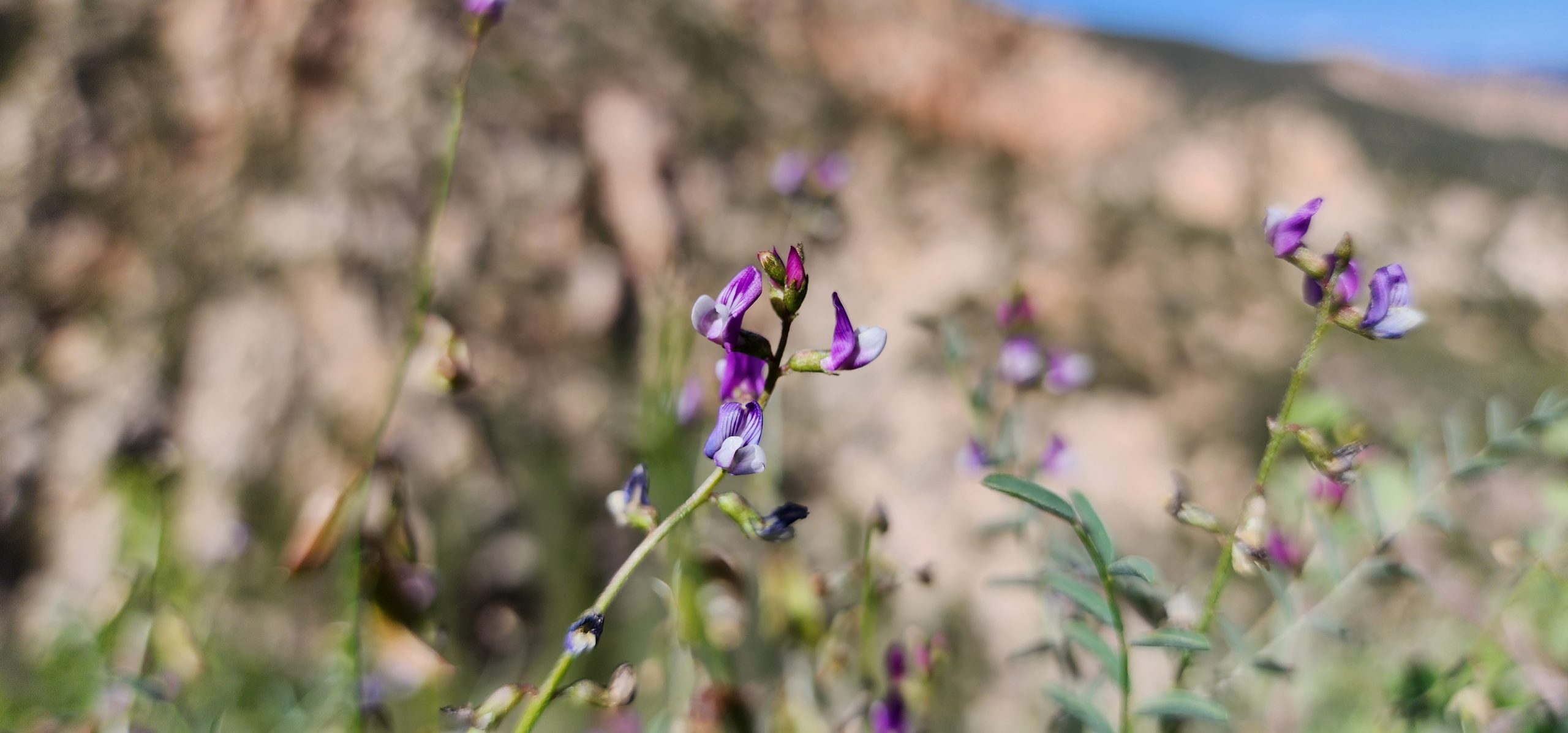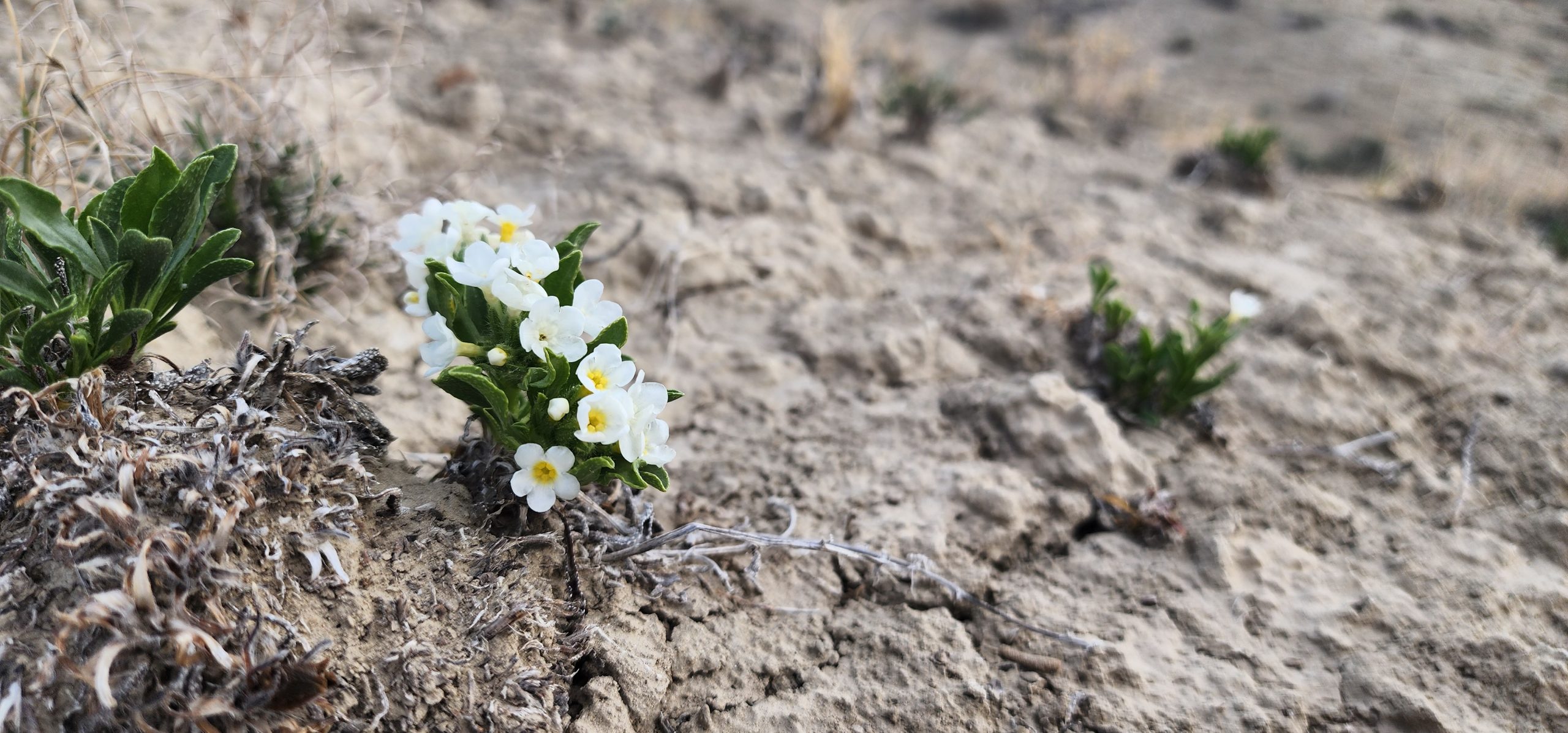Save Plants
CENTER FOR PLANT CONSERVATION
January 2021 Newsletter
It’s a New Year and CPC has NEW works to share! We welcome you to our NEW-ly designed website, www.saveplants.org, which features old favorites like the Advocacy Page with a NEW look. Don’t worry, the updated design combines the best of our former website with NEW features and NEW formatting that makes it easier for readers to see information quickly and for our partners to share photos and stories.
The Rare Plant Academy has a NEW section to our best practice guidelines about Conservation Horticulture. We thank all the conservation officers who contributed ideas for this section at the 2018 CPC National Meeting and made subsequent edits. The Rare Plant Academy is a living, growing resource. When you see these Conservation Horticulture Best Practices, you may realize that you have tips to share about how you grow bromeliads, handle pests on cycads, or get a particularly tricky species to germinate. We invite you to share your conservation successes to plant profiles, or ask questions to our community forum through the revamped RPA posting tools (saveplants.org/login). These best practices are intended to help those working to SAVE PLANTS in the network and around the world, so don’t be shy. The sky is the limit! We hope that you will enjoy the NEW Look and the NEW content at www.saveplants.org!
As always, we wish you and your families continued good health and safety,
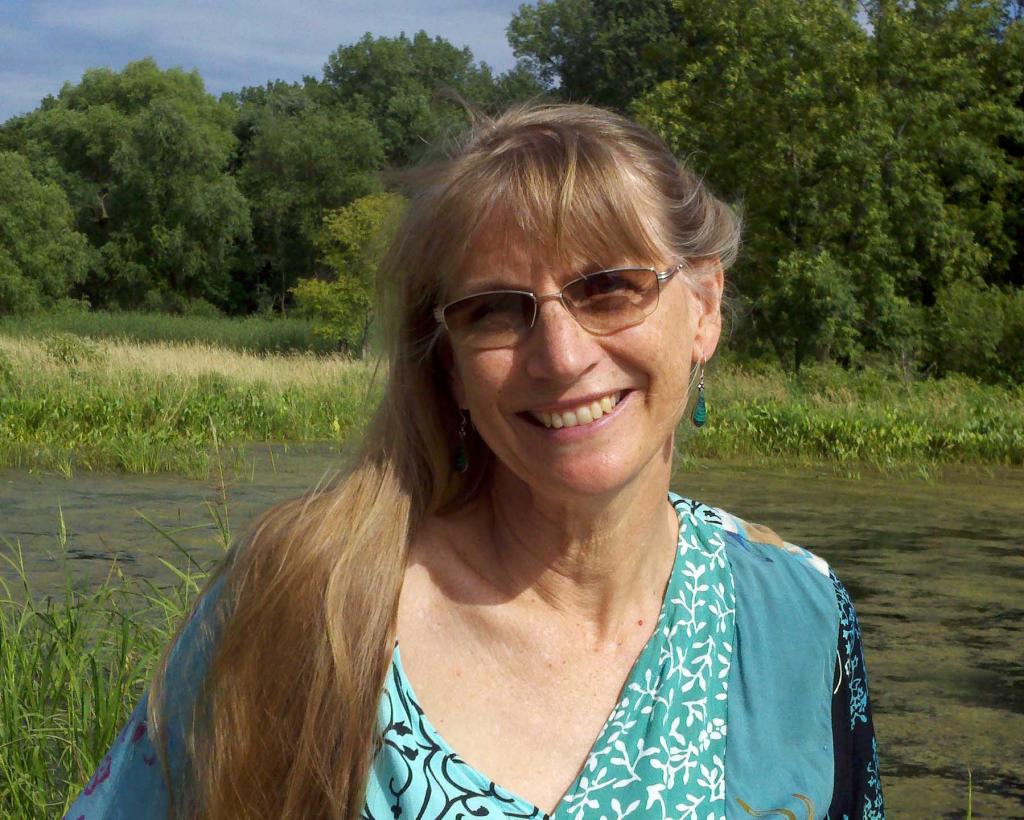
Joyce Maschinski
CPC President & CEOWhere Rare Plants are Free to Flourish
In the hills above Berkeley, a California native plant sanctuary nurtures rare species in a creative way. Like many botanic gardens, Regional Parks Botanic Garden (RPBG) is organized by ecological-geographical sections that represent key ecosystems of California, from Shasta-Klamath to Southern California, with subsections that highlight special regions, such as the Antioch Dunes. New species brought in find a home in their appropriate section—but that doesn’t mean they stay there. Short-lived annuals and biennials are prone to find their own preferred habitats within the garden. And if the species happens to be rare, RPBG often allows the plants to stay there.
Vine Hill clarkia (Clarkia imbricata), known from only one transplanted population and an extirpated wild population in Sonoma, California, flourishes at RPBG—where it proved to have a mind of its own. Over time, the endangered clarkia migrated downhill from its initial site into the Sierra section. Similarly, the federally listed Contra Costa wallflower (Erysimum capitatum ssp. angustatum), although thriving in the Antioch Dunes subsection, has been steadily invading the adjacent Foothills subsection for years.
The garden’s laissez-faire approach to maintaining annuals and perennials works with extremely rare species in cases where only one wild population is represented in the collection, eliminating any worry about mixing genetics across populations. Very recently, however, the garden experienced hybridization of two endangered species of the genus (see below). While they have let these plants stay in their preferred homes, they are now careful to dock the flowers of the hybrid morphologies and mark their stems for removal after the growing season.
RPBG maintains records of provenance (place of origin) for its conservation collections so that the material may be used as a source of seed or plants to support wild populations. From the early days of the garden, this recordkeeping and care for rare plants has proven helpful to conservationists working with wild populations. James Roof, founder and first director of the garden, collected plants from San Francisco and San Bruno Mountain plants—even those considered common—whose homes were already being threatened by development. One of Roof’s collections, Leo Brewer’s manzanita (Arctostaphylos uva-ursi var. leobreweri), was extirpated from San Bruno Mountain as the result of a fire shortly after the collection was made. Successful establishment of this shrub at the garden enabled RPBG to support its reintroduction to the mountain in the 1980s. Similar efforts to restore the federally endangered Franciscan manzanita (A. hookeri ssp. franciscana) at the Presidio in San Francisco draws upon a population established at the garden in the 1940s for restoration material.
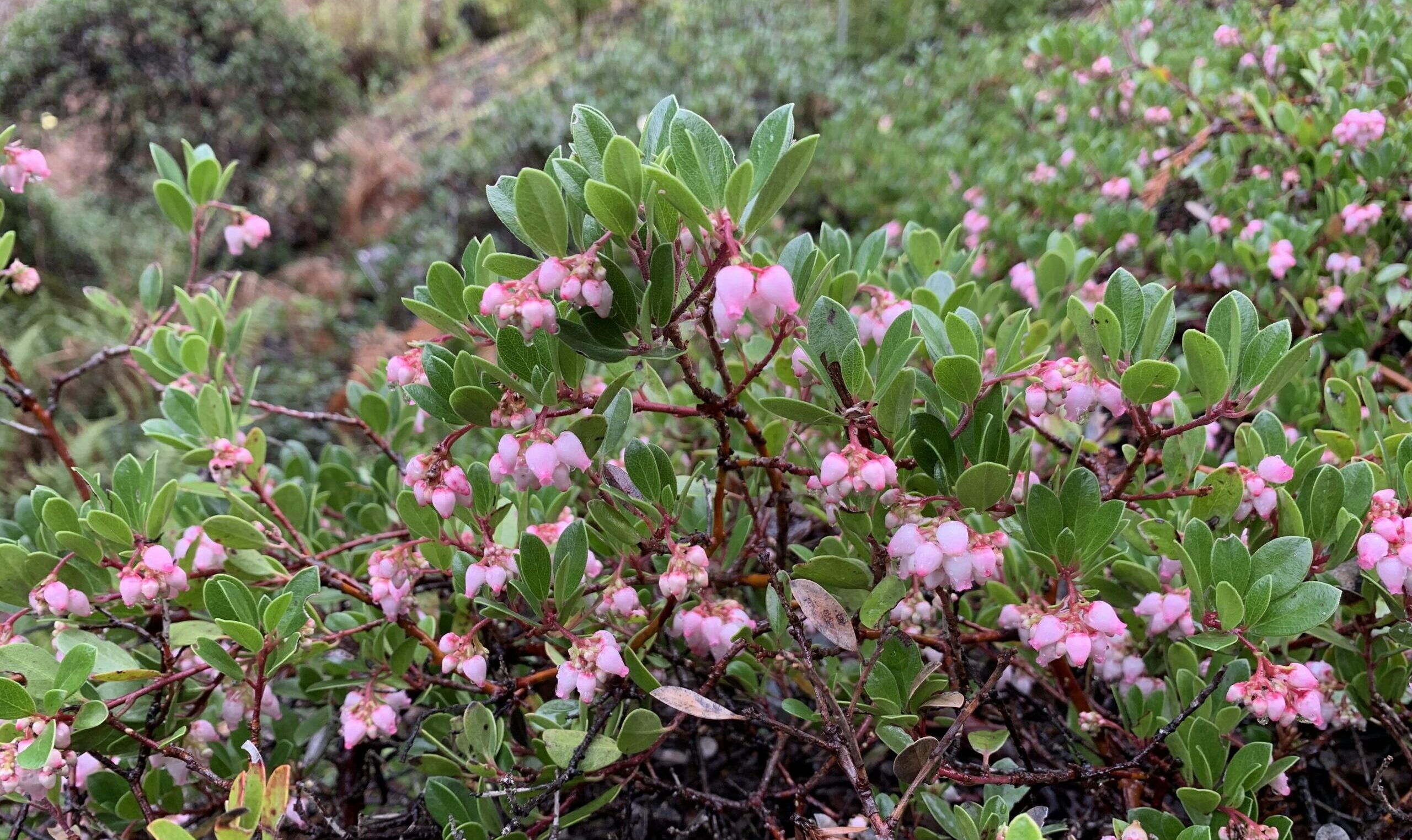
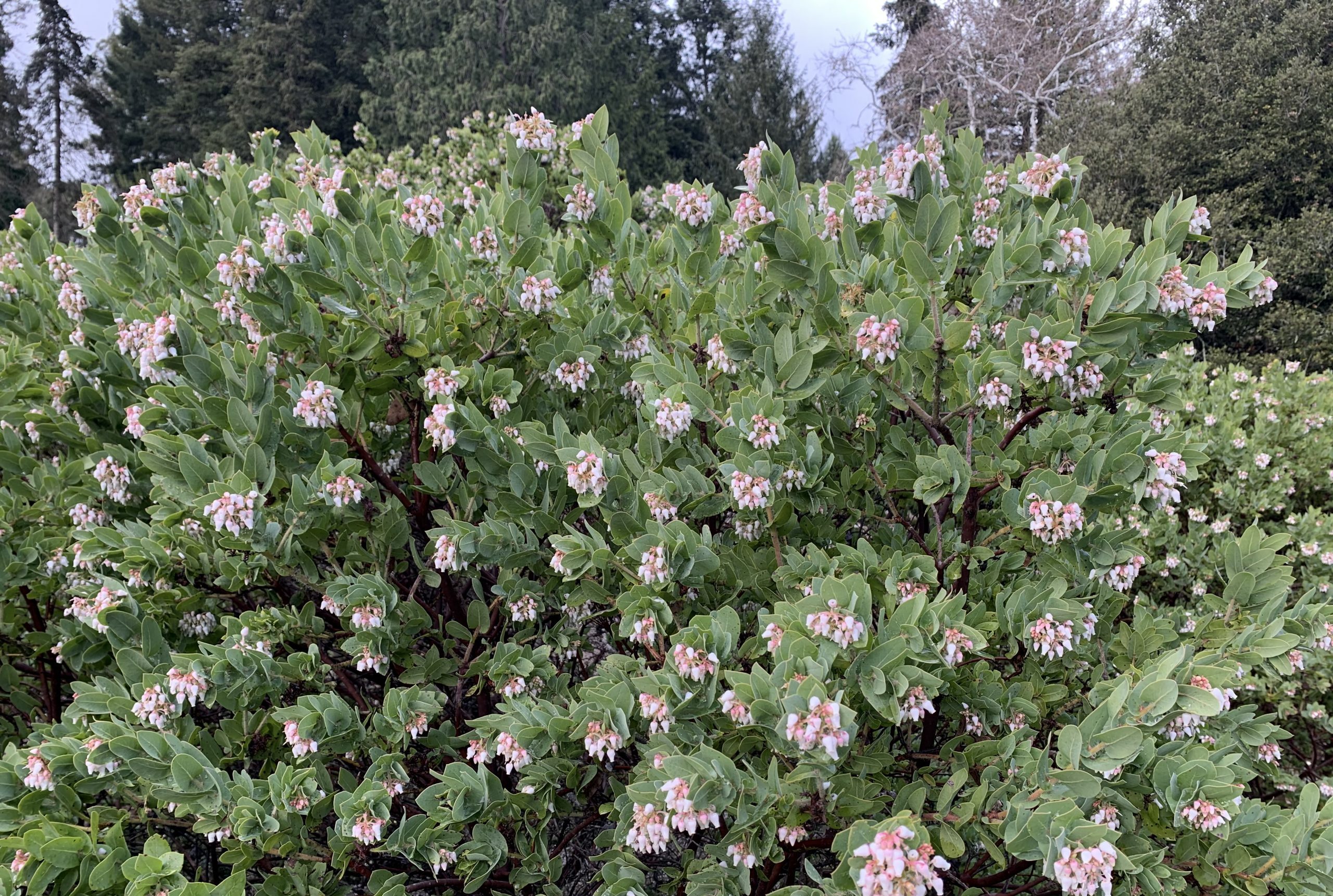
More than 300 types of rare plants and many common plants from across California are currently maintained at RPBG. Located in Wildcat Canyon in Tilden Regional Park, the garden enjoys a happy medium between inland heat and cool coastal damp. The site offers ideal growing conditions for both northern and southern California species, from coast to deserts.
RPBG is proud host to the world’s most complete collection of California manzanitas (Arctostaphylos) and a robust collection of California geophytes, covering species endemic to remote corners of the state. Garden staff members are each responsible for their own areas, applying carefully developed regional knowledge to handle propagation through daily care. The combination of an ideal location and a focused, professional staff gives RPBG success in growing plant species that struggle elsewhere. Although the garden does not propagate plants benches or propagate in mass or for seed production, its collections have proven quite helpful to UC Botanic Garden (a CPC participating institution) and other collaborators working to revive wild populations of rare plants.
-

Yadon's wallflower (Erysimum menziesii var. yadonii) though no longer recognized as a subspecies, is another short-lived endangered species finding success at RPBG. Photo by Bart O'Brien, courtesy of Regional Parks Botanic Garden. -
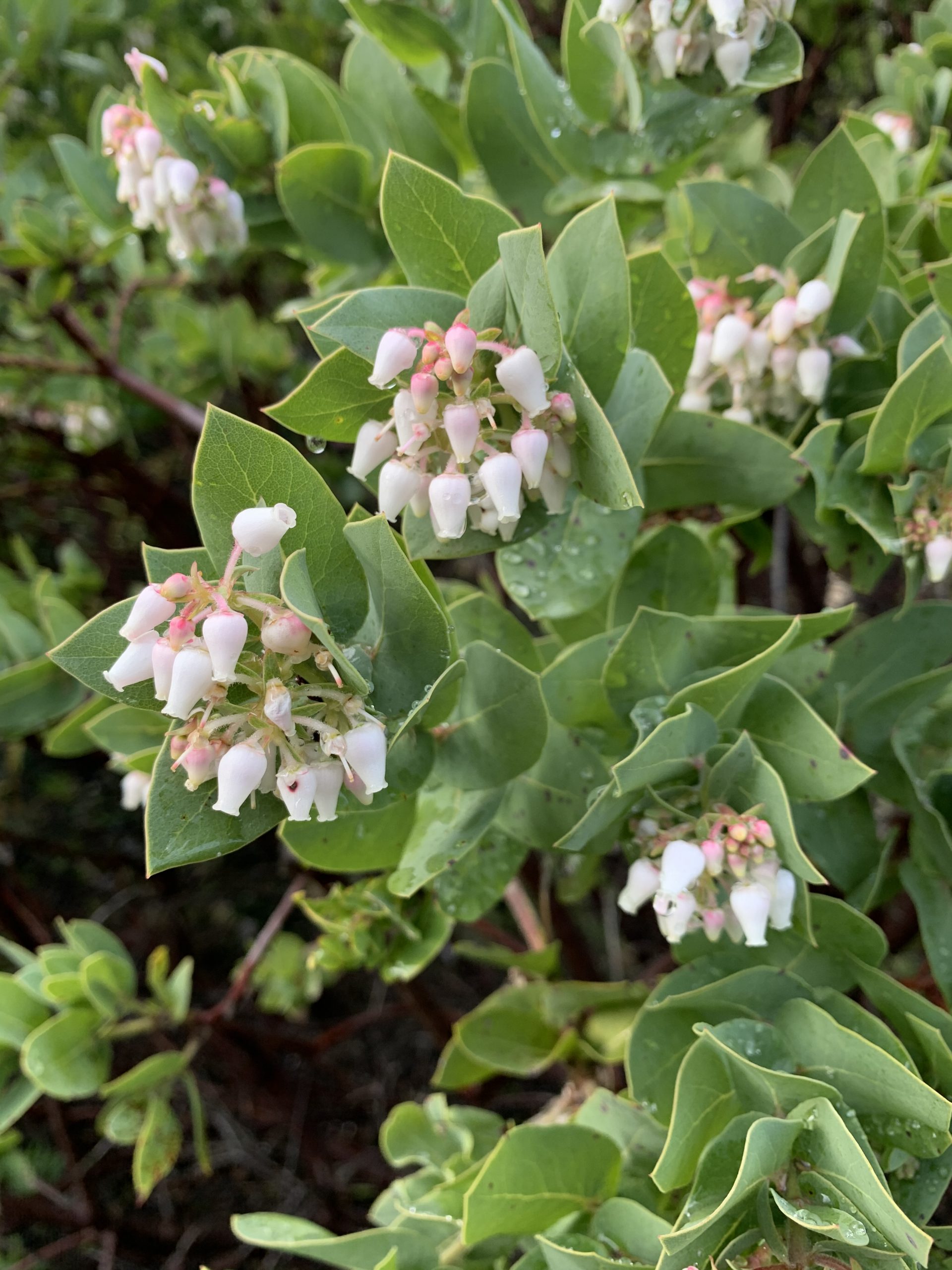
Regional Parks Botanic Garden staff have propagated Alameda manzanita (Arctostaphylos pallida), listed by the state of California as endangered, to supplement wild populations in the Oakland foothills. Photo by Bart O'Brien, courtesy of Regional Parks Botanic Garden. -
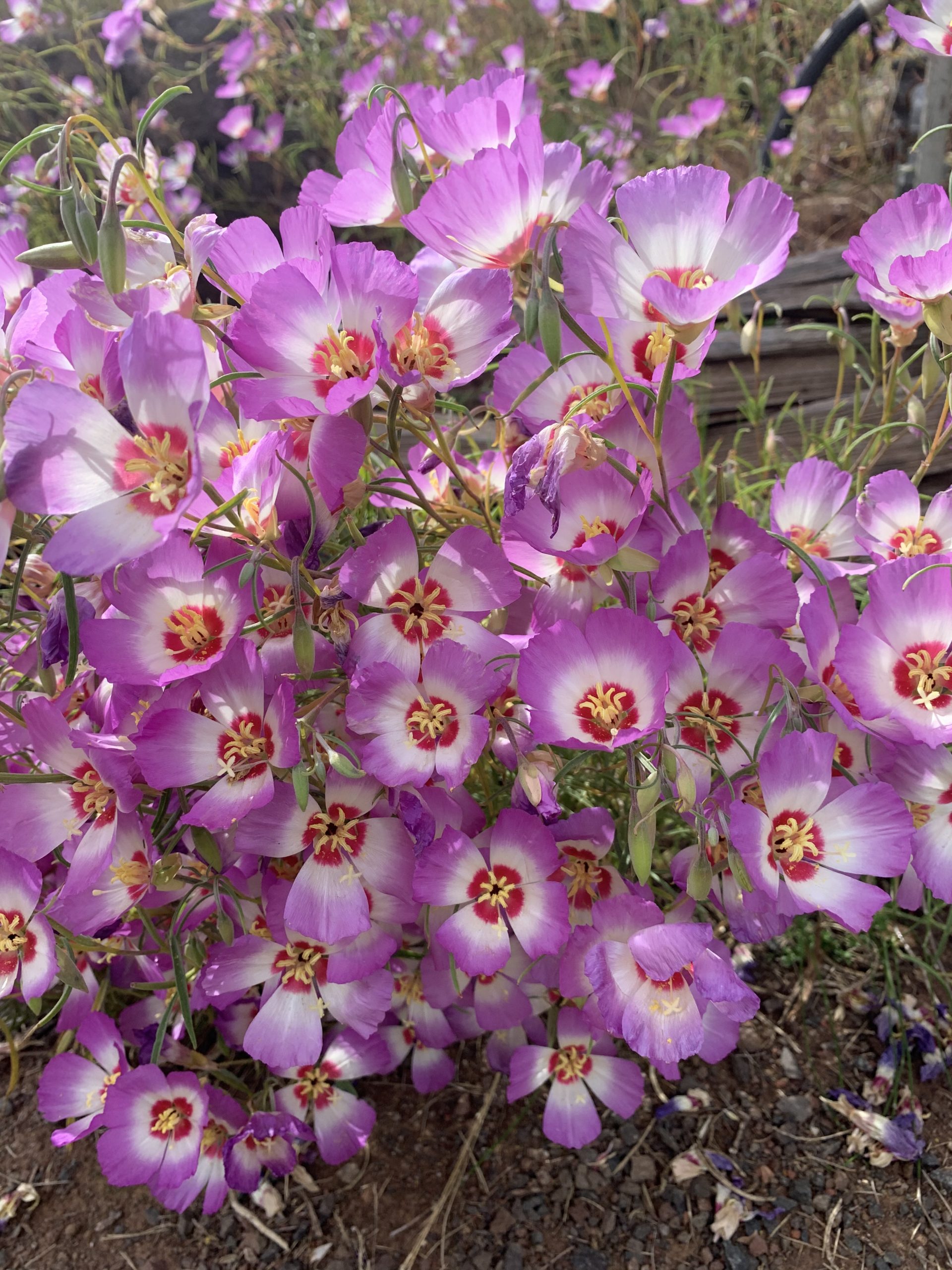
White-stemmed clarkia (Clarkia gracilis ssp. albicaulis) is a rare annual herb thriving in RBPG. The is able to grow clarkia from all across the state given its unique location. Photo by Bart O'Brien, courtesy of Regional Parks Botanic Garden.
Hybridization of Two Endangered Delphinium Species
When yellow larkspur (Delphinium luteum) and Baker’s larkspur (Delphinium bakeri) were originally added to the Regional Parks Botanic Garden decades ago, it was possible to maintain both in the same section of the garden. Hybridization was not viewed as a possibility because the Baker’s larkspur pushed up green leaves later and flowered well after the other species had completed its bloom. In the past two years, however, Director Bart O’Brien and his staff have noticed blue flowers and different leaves mixed in with the yellow larkspur. How could this be? It turned out that the Baker’s larkspur–the only blue-flowered larkspur in the collection–was beginning to flower earlier. The unusual blue-flowered plants appearing among the yellow larkspur were indeed likely to be hybrids between the two endangered plants.
Maintaining the genetic integrity and uniqueness of these populations is vital, especially since these rare plants may again serve to bolster wild populations. In fact, RPBG has already helped bolster the UC Botanic Garden seed collections with their collections. To protect the collection, hybrids are not allowed to set seed. For these larkspurs, the team docks the flowers of the hybrids and later pulls rootstocks when all the plants in the bed are dormant.
Although the garden environment is fundamentally different from the wild, both are subject to change. The effects of climate change on plant growth and flowering present increasing challenges to garden managers. Fortunately, RPBG has come up with a solution to protect the genetic integrity of these two beautiful and threatened plants.
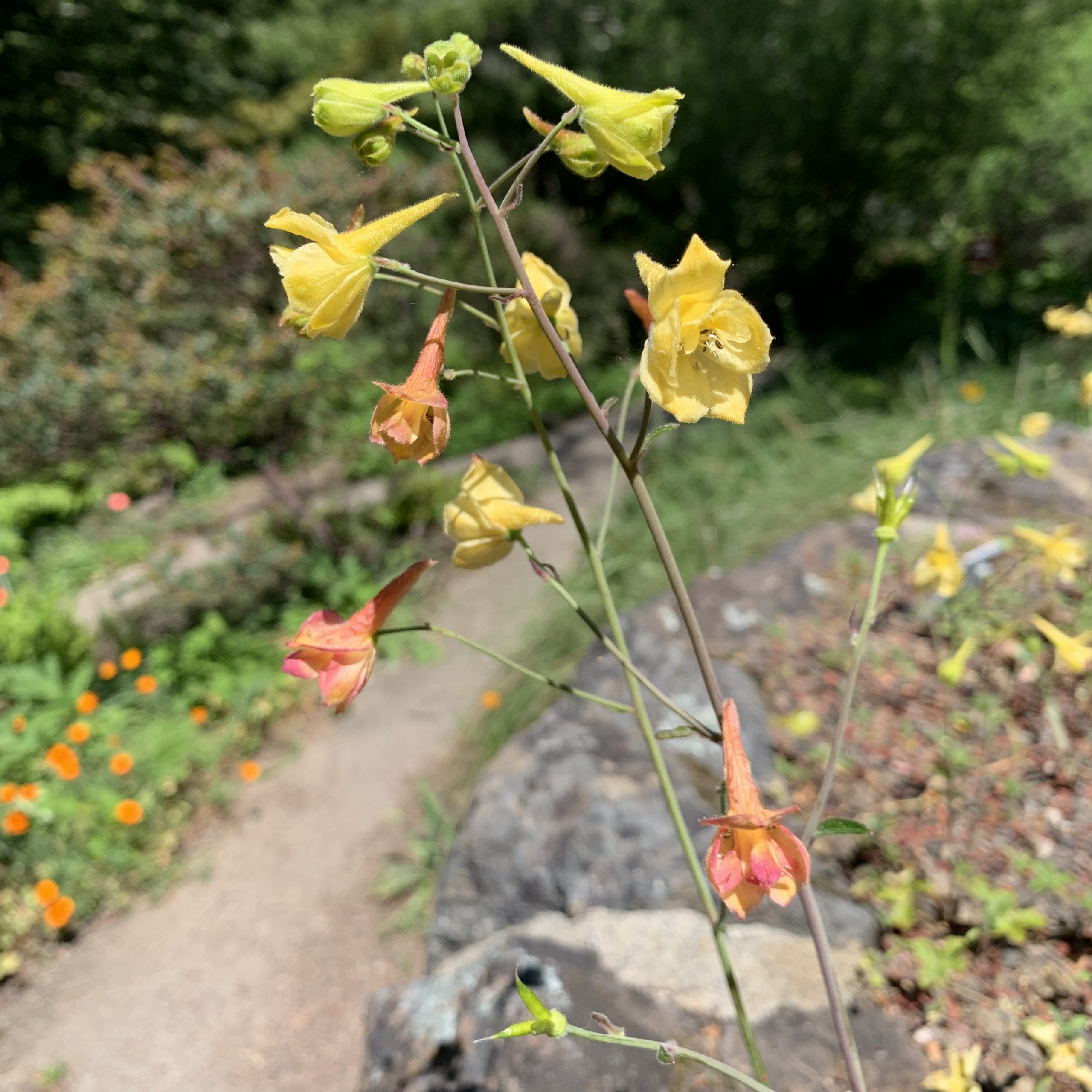
Metacollections and Collaborations
Botanic gardens have a long history of transferring seeds, pollen, and plants from one garden to another. In fact, international seed exchange is one of the largest sources of plant material for botanic gardens. Over time, these transfers have become more formal, with better information and record sharing occurring in tandem with the sharing of plant material. The potential for these exchanges to enhance conservation and science is clear. And Botanic Gardens Conservation International (BGCI) is at the forefront of these efforts, promoting what may be the pinnacle of plant and data sharing—the management of metacollections.
Metacollections of plants are more than the combined holdings of any one species or taxonomic group across multiple institutions; they are a common resource, held by separate institutions but stewarded collaboratively. BGCI and Montgomery Botanical Center list the benefits as follows: “Networking multiple collections into a single collection increases potential coverage within a group, allows broader access to greater diversity, dilutes risk of loss, and can reduce maintenance costs.”
The Center for Plant Conservation Best Practices promotes metacollections as powerful tools for exceptional rare plant species—those that cannot be maintained in seed collections and may be too demanding for any one institution to support as a genetically-diverse collection. Abby Meyer, Executive Director of BGCI-US, points out that “to be effective, living collections conserving exceptional species long-term must include numerous individuals of known wild origin that represent the full geographic and ecological range of a species. That can be physically and climatically impossible for one institution to take on.” For many species and institutions, metacollections are key to making those effective conservation collections possible.
Since 2018, BGCI has launched a series of Global Conservation Consortia (GCC) with a number of botanic garden partners, focused on exceptional tree groups. The GCC mobilize institutions and experts to collaboratively develop and implement comprehensive conservation strategies for priority threatened plant groups. This approach builds on the model that zoos use to strategically manage and breed captive populations of animals, in which metacollections play an important role. The current Consortia are dedicated to Acer (maples), Cycads, Dipterocarps (commercially useful rainforest trees), Erica (heath), Magnolia, Oak, and Rhododendron.
Each consortium comprises a Global Consortium Lead and a Consortium Steering Committee, which work in consultation with BGCI to prioritize, track, and regionally coordinate conservation efforts. GCC Species Stewards, who manage the plants, make up the bulk of each consortium and drive ex situ and in situ species conservation action. Species Stewards may manage a combination of conservation site types, including ex situ, “near situ,” and/or in situ (outside, near, or within a native habitat). Any combination of these can represent a metacollection for a priority species.
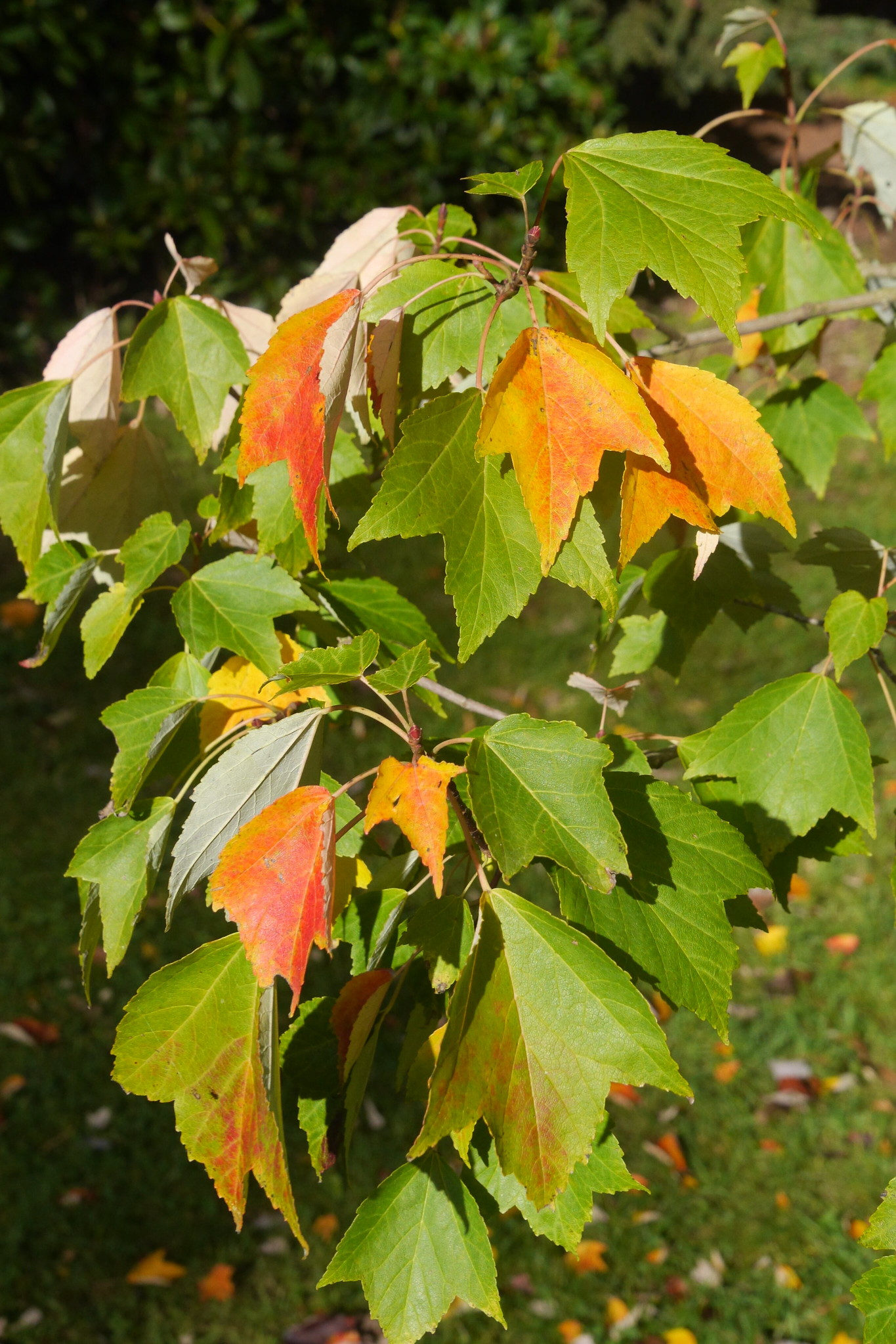
BGCI’s program is ambitious yet achievable. These seven groups represent hundreds of threatened, exceptional taxa. By engaging BGCI’s global network of over 3,000 botanic gardens, sharing information and best practices, and connecting expertise and resources, the global botanical community can leverage our collective capacity to promote conservation for the species and regions that need it most.
One example of how the program can benefit rare species is the Conservation Gap Analysis of Native U.S. Oaks, conducted and published by The Morton Arboretum in collaboration with BGCI-US and supported by the USDA Forest Service. This report identifies conservation priorities for U.S. native oak species of conservation concern. The research was done as part of The Morton Arboretum’s program to conserve Quercus georgiana, applying a novel methodology to compare ex situ holdings at gardens and identify wild collecting priorities. The goal is to define and develop a genetically representative ex situ metacollection for the species. The successful methodology provided a blueprint for launching BGCI’s Global Conservation Consortia. The Morton Arboretum now serves as the lead institution for the Oak GCC, under the coordination of Dr. Murphy Westwood, Director of Global Tree Conservation at The Morton Arboretum.
The Global Conservation Consortia direct efforts toward areas of high species diversity and build conservation capacity in species’ countries of origin, through resource development, training workshops, and gap analysis. The ultimate focus of the Consortia is regional coordination of integrated plant conservation actions for priority threatened species. Multiple gardens support a distributed network of backup collections of threatened and rare species through their living collections, and no single institution bears sole responsibility for a species’ survival.
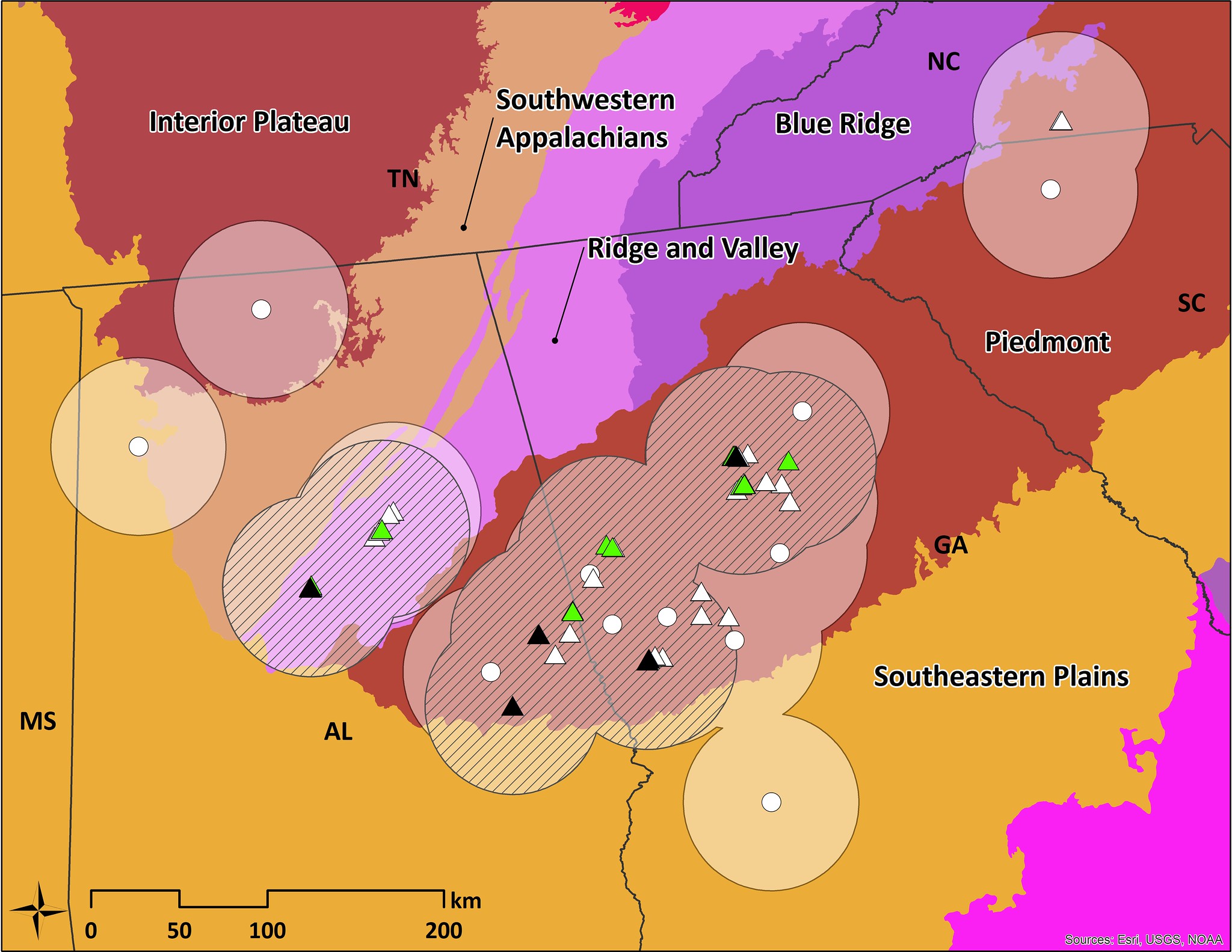

Many plants will undoubtedly benefit from the cooperative efforts of BGCI institutions, as they work through the GCC to collaboratively develop and implement comprehensive conservation strategies for priority threatened plant groups. With this program, BGCI is positioned to achieve increased conservation capacity in biodiverse regions of the world and, ultimately, recovery of threatened species in the wild.
Plant Search Database
A central way that BGCI supports global metacollection coordination is through the PlantSearch database, the only global database of living plants, seeds, and tissue collections. Any living collection can contribute data to PlantSearch. Institutions receive valuable information in return, including global threat status and the number of known ex situ locations per species. By aggregating collections information, gap analysis and prioritization of conservation action can take place at local, regional, and global scales. In partnership with the United States Botanic Garden, the Chicago Botanic Garden, and The Morton Arboretum, BGCI-US is currently leading efforts to update and expand PlantSearch to accommodate taxon-level data as well as specimen-level demographic and genetic data. This new system will facilitate metacollection management for exceptional species.
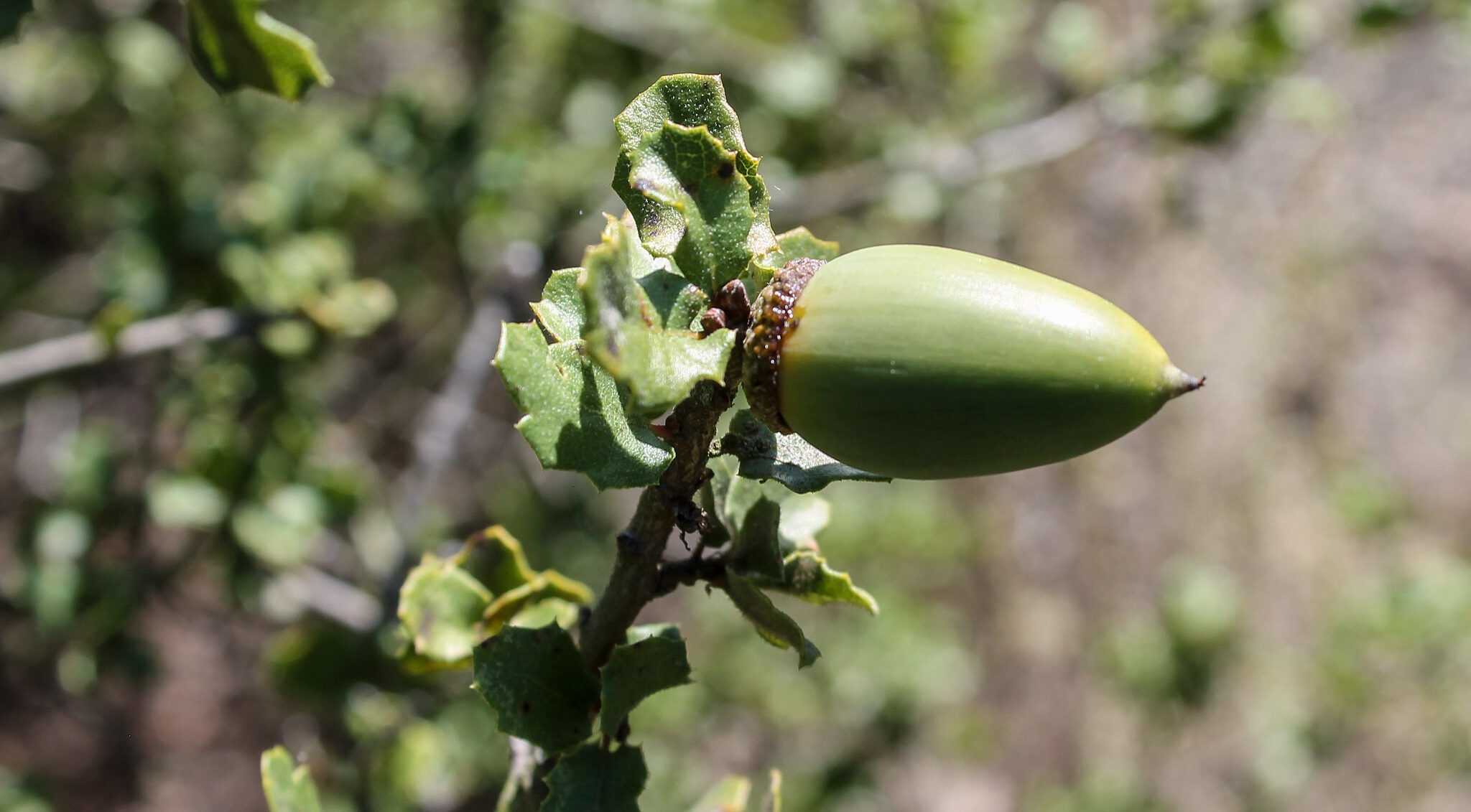
Growing a Rare Shrub and a Program
San Diego Botanic Garden (SDBG) has long displayed rare and native plants and supported conservation work as opportunities arose. A few years ago, the team initiated a more active search for projects to support native plant conservation efforts. With San Diego County’s rich diversity of rare plants, the possibilities were great. Director of Conservation Horticulture Tony Gurnoe decided to leverage a good relationship with the City of Encinitas, home to SDBG, to support a rare dioecious (having separate male and female plants) shrub, Encinitas baccharis (Baccharis vanessae).
Encinitas baccharis is a rather inconspicuous evergreen shrub. Tony notes, “People would walk past it a thousand times without noticing it as anything other than a plant.” This seems to endear Tony and others to the shrub. He described how one individual is dramatically sheared annually during trail work, yet persists as just one of 26 in its population. “Somehow these plants are delicate, wispy, and wimpy while also being resourceful, rugged, and tenacious.”
The first step to help conserve this species is collecting seed. SDBG’s strong relationship with the City of Encinitas enabled Tony to secure permission to collect at Oak Crest Park. He also obtained permits from California Department of Fish and Wildlife. With detailed location data, provided by local botanist Jessie Vinje of the Conservation Biology Institute, the team began to keep an eye on the plants and make their own maps to collect relevant data. Taking advantage of the close proximity of the wild population to SDBG, Tony would often do the monitoring work on his lunch break.
Initial efforts were fruitful, with the team collecting seed from ten maternal lines. Nine of the lines turned out to have viable seeds—not bad for a small population of only 26 male and female plants! Following the seed collection in Encinitas, Tony collaborated with staff from San Diego Zoo Global to collect from a larger population. Despite several times as many plants, however, these shrubs were less productive, providing many fewer seeds per individual. One cause might be the dramatically different environmental conditions of the Encinitas population, where this baccharis faces unique pressures—namely trampling from park visitors—but otherwise thrives in a way not seen in the other locations.
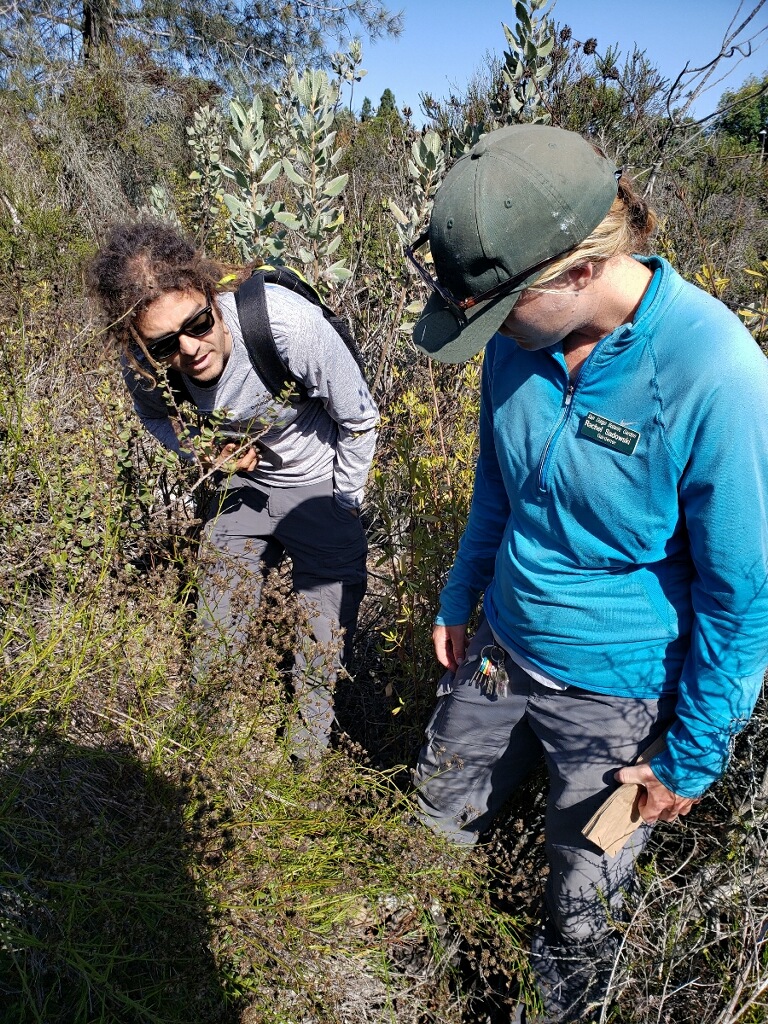
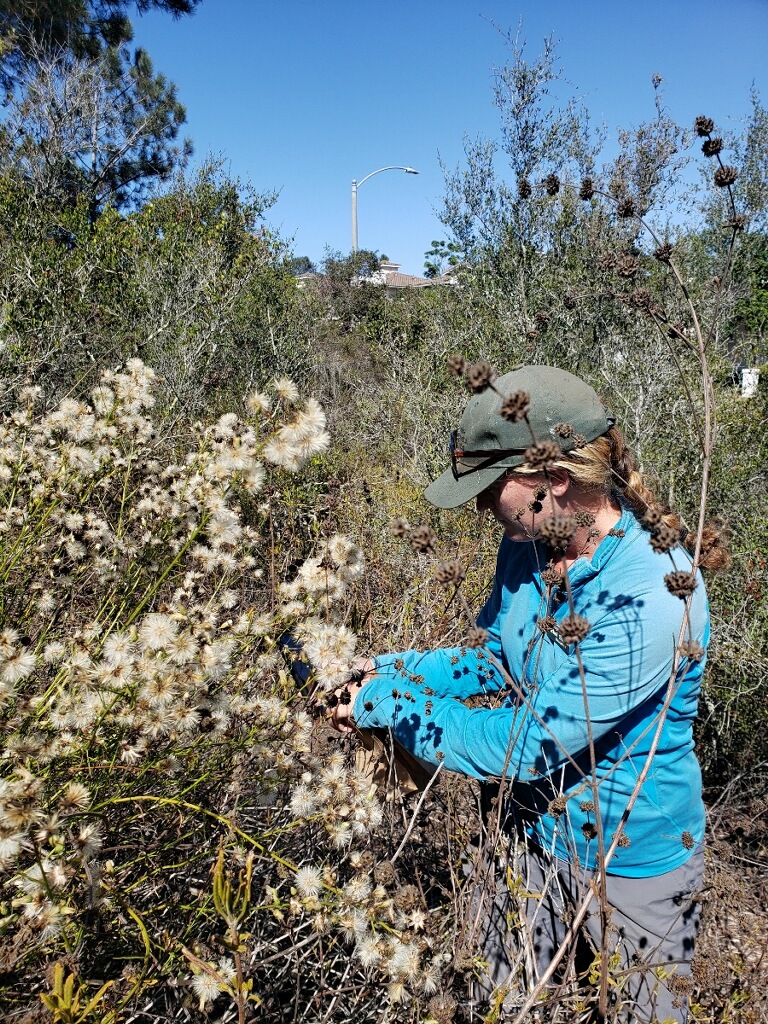
After processing the Oak Crest Park seeds, the collections were divided and sent to San Diego Zoo Global and NLGRP for long-term seed banking. Some of the seed was portioned out for immediate propagation. With so few mother plants represented, the horticulture team has been careful to track seeds and seedlings to their maternal sources, mapping to specific plants in the field. Happily, within a single growing season, many of the hundreds of successfully started seedlings began to flower in the nursery.
The propagation success came quickly without a need for experimentation. According to Tony, the team “happened into something that worked right away”—yet it was more than just
happening upon a formula. Tony considered the environment and lifecycle of the plants in their natural habitat from a horticultural lens, as recommended when attempting to grow an infrequently or never-before propagated native. He reviewed soil texture, natural rain patterns, condensation, and more. The basic nursery germination protocols developed by the SDBG team consistently provided ~80% germination and resulted in more than 95% of the seedlings surviving their initial potting up.
Despite their inconspicuous nature, the Encinitas baccharis plants are now finding homes and getting attention. Within the garden, several dozen were planted along the trail in the ‘Native Plants, Native People’ area with interpretive signage, as well as in the garden’s natural area. Many are finding their way to other gardens, including San Diego Zoo, Santa Barbara Botanic Garden, California Botanic Garden, and Regional Parks Botanic Garden. The mayor and several city council members have lauded the project in their newsletters. And, of course, the garden is educating their visitors and social media followers about this tenacious shrub.
While having seeds in seed banks and plants in gardens makes Tony feel a bit more secure about the imperiled state of this population of Encinitas baccharis, he’s hoping that his program can do more. And that is one reason he is trying to kill them! Or rather, a few of them. He asked his team to alter their care of some of the plants to begin determining where their tolerances lie. Such research is especially helpful given the looming threats of drought and climate change in a landscape impacted by development. Tony hopes to find funding to set up an adaptive traits trial using material from several populations that appear to be significantly different genetically. Putting plants grown from different populations through a gauntlet of stress factors will provide information on whether genetic differences found in a recent USGS-led genetics study represent any real world adaptive advantages for any particular population.
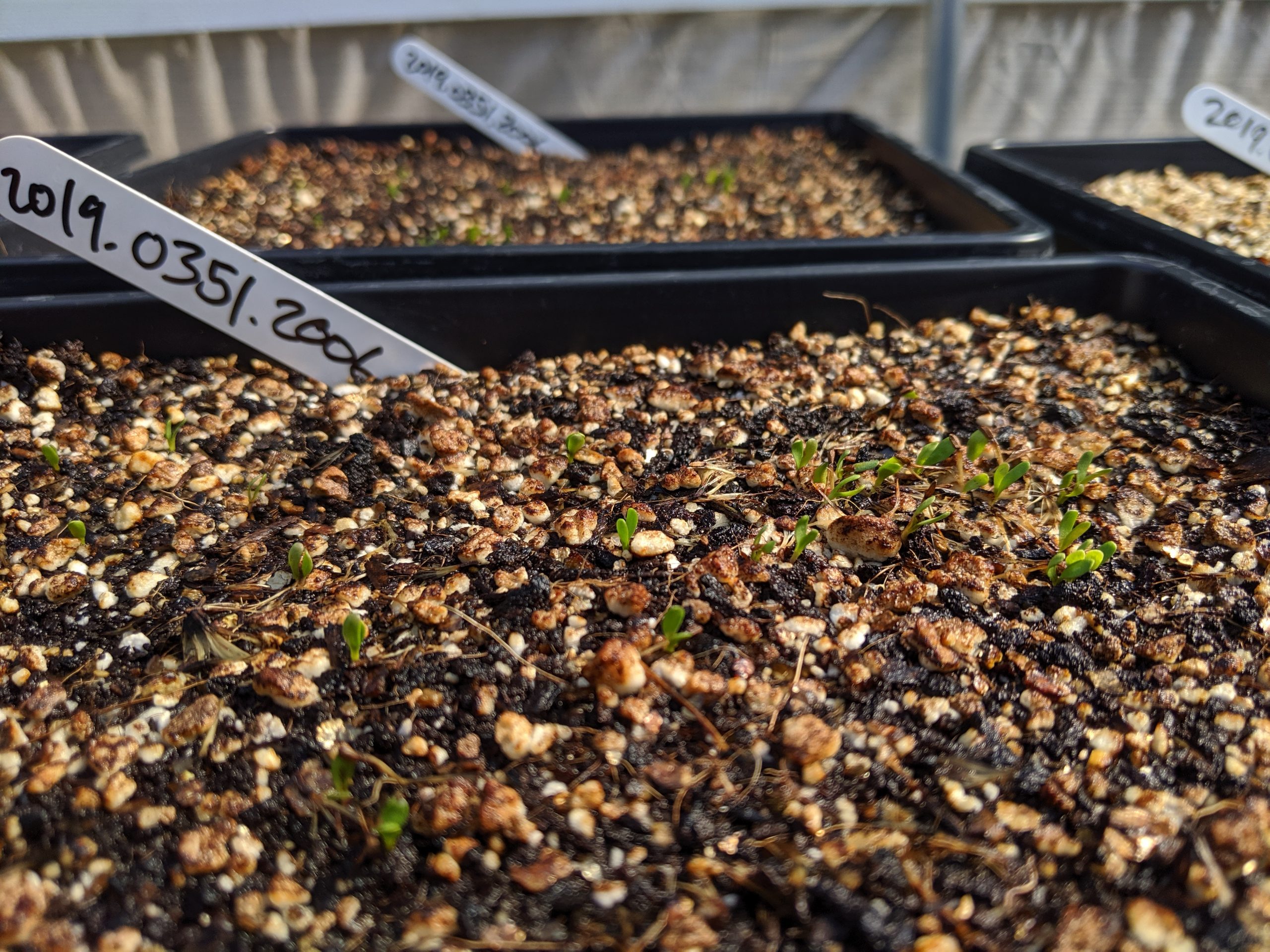
Beyond horticulture-based research, Tony hopes to find support for a population reinforcement project at Oak Crest Park. In the meantime, the SDBG team will keep working to collect seed from other unrepresented populations and continue to refine the horticultural protocols related to this species. As the SDBG conservation horticulture program grows, so does the hope for Encinitas baccharis to survive and thrive.
-
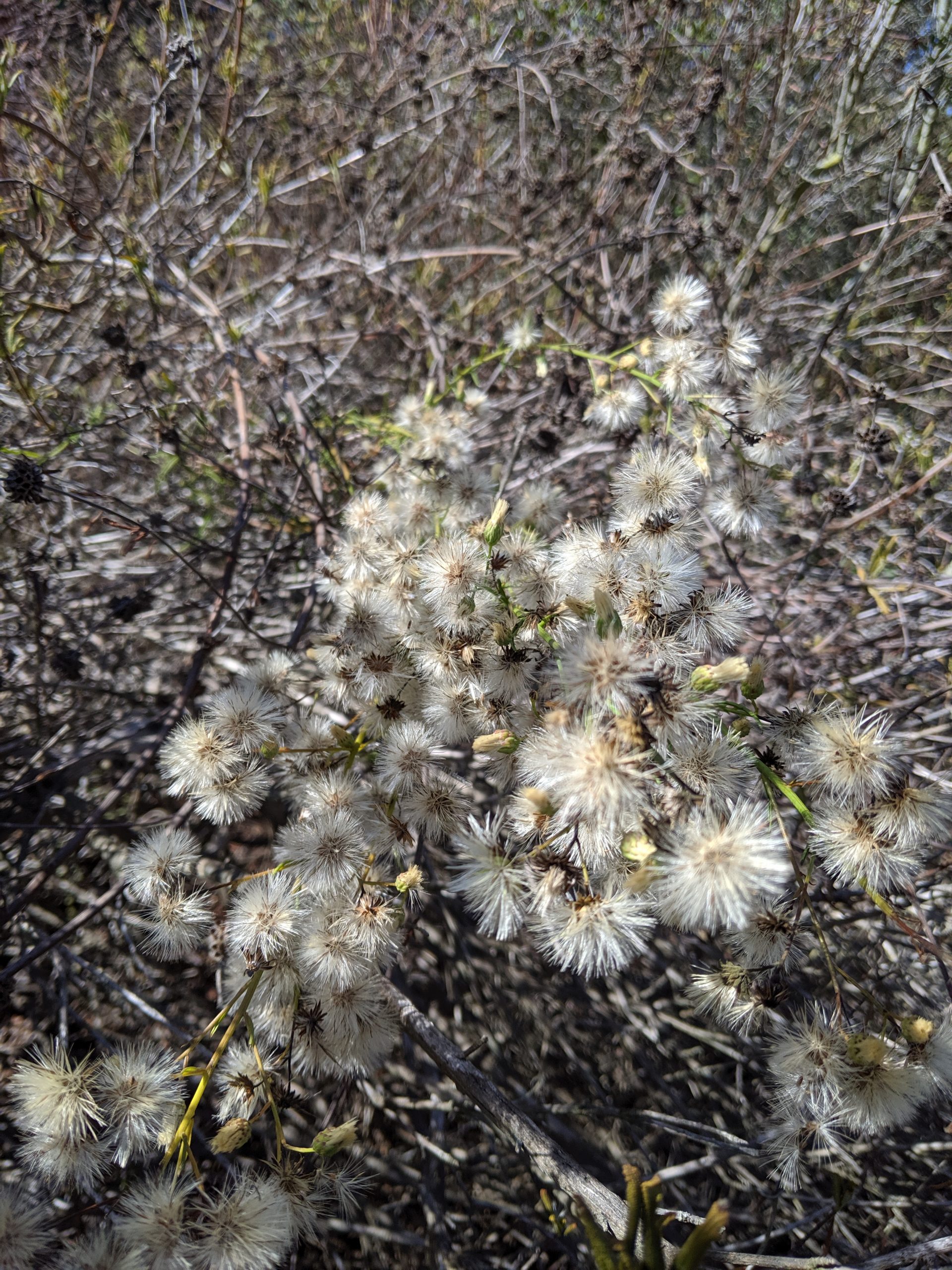
One of only eleven female Encinitas baccharis (Baccharis vanessae) plants at Oak Crest Park full of mature seed. Credit: Rachel Sadowski -
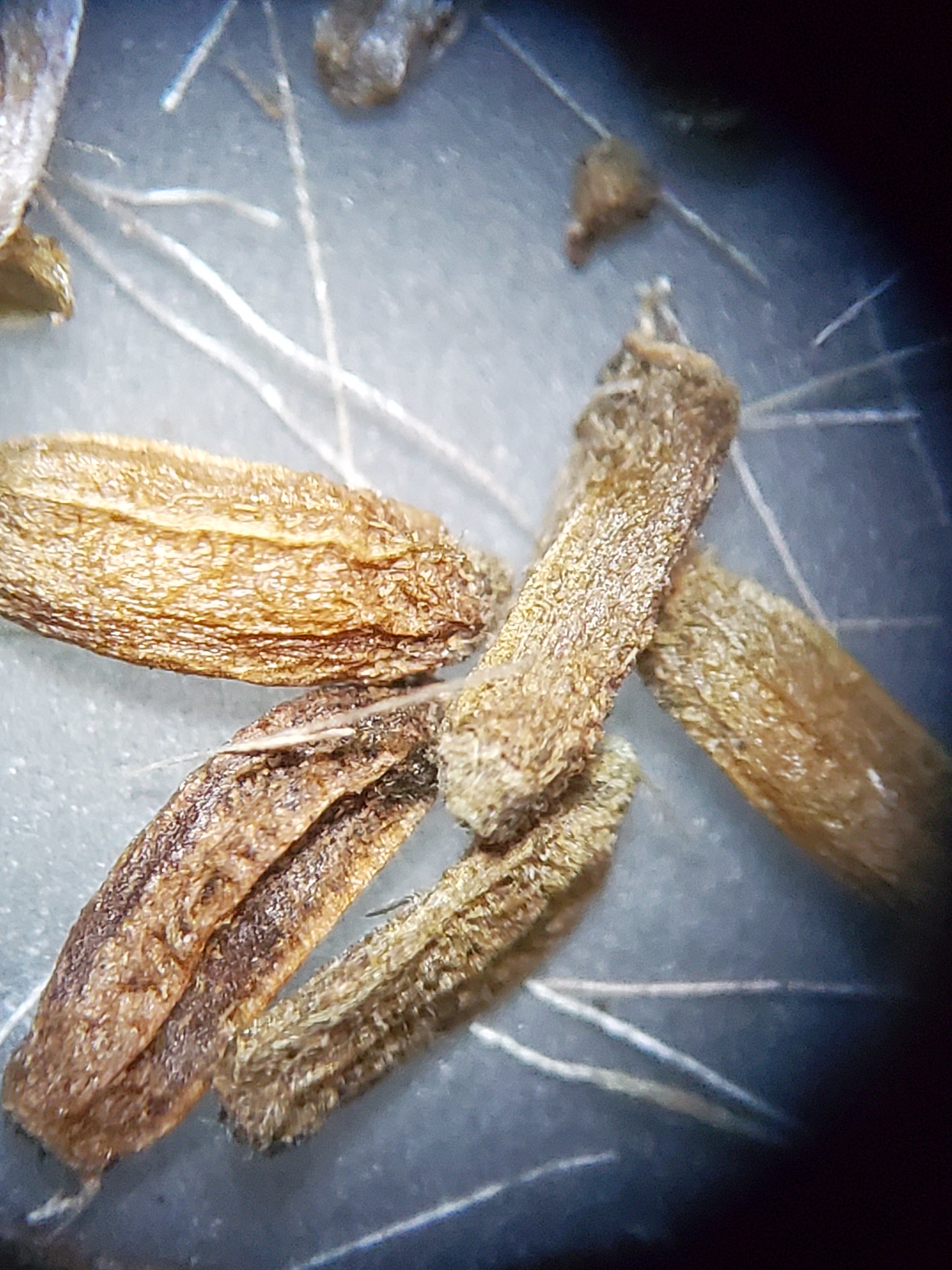
Nearly clean Baccharis vanessae seed with pappus remnants. Seed was all hand cleaned - but with expansion of the SDBG program the team can use seed blowers and other equipment in the future. Credit: Tony Gurnoe -
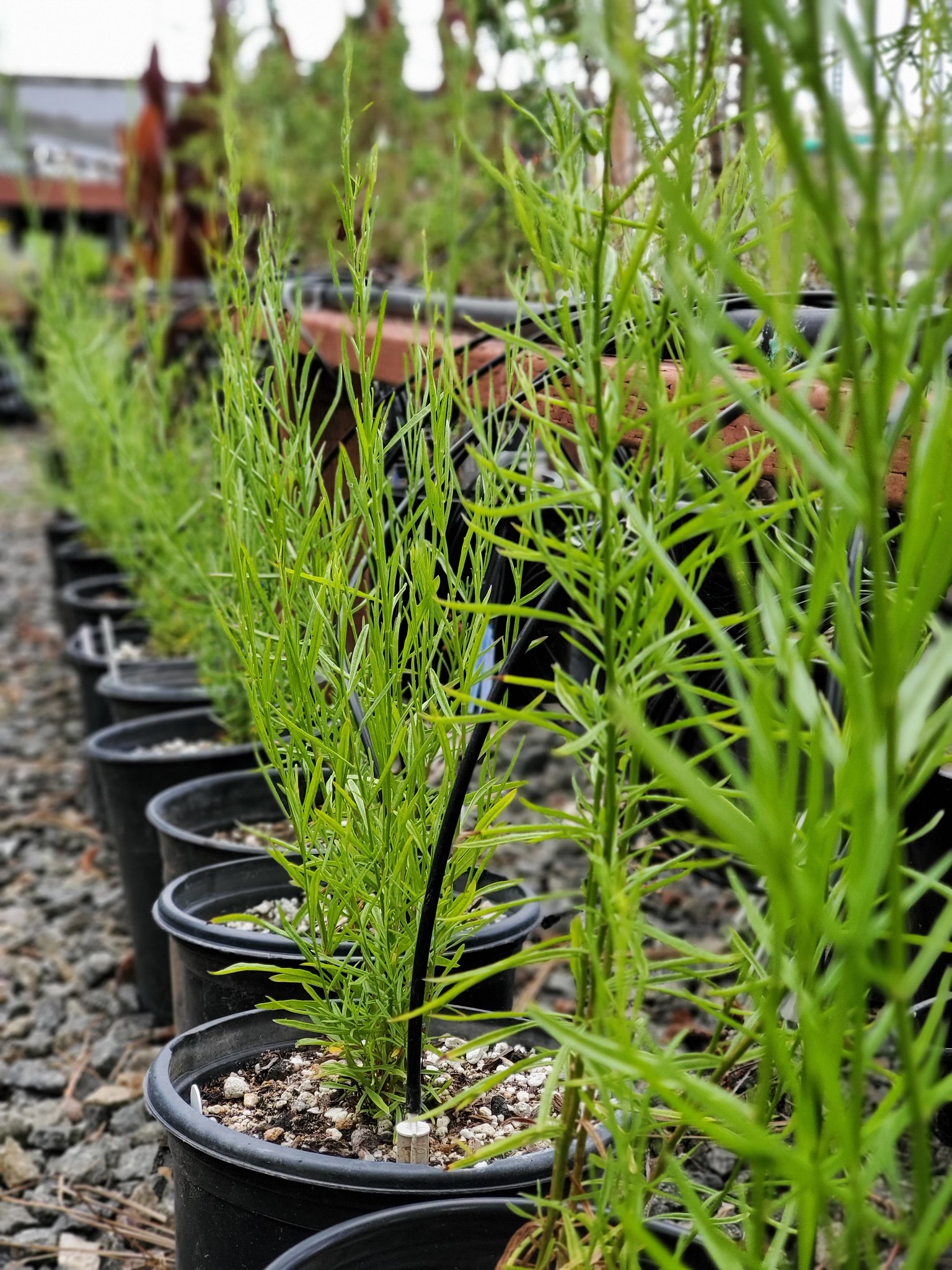
Dozens of wild sourced, endangered Encinitas Baccharis flourishing in the San Diego Botanic Garden's nursery. Credit: Tony Gurnoe
Christy Powell
Christy Powell, our January Conservation Champion, is a conservation horticulturist extraordinaire! She not only takes good care of plants and people, but also thirsts for answers to unknown questions, seeks collaborations to address those questions, and juggles a very big plate all the while. We are fortunate to have Christy promoting and supporting big interdisciplinary conservation horticulture projects here in the U.S. and around the world.
When did you first fall in love with plants?
I grew up in the Indiana countryside, and plants were a big part of my life. I picked apples from our orchard and raspberries on my grandparents’ property, surrounded by fields of corn, soybeans and wheat. My grandmother, who loved to garden, volunteered with a group called the Settlers to maintain herb gardens around Swinney Homestead, a historic building and museum in Ft. Wayne. She took me to see the gardens and learn about the history of the settlers in that region. My parents also encouraged learning about and respecting nature. On camping trips, my mother would quiz us on trees along the trails. I remember her holding up three leaves of varying shapes and asking what they were. “Sassafras!” my brother and I would yell.
What was your path to becoming a horticultural manager?
My favorite subject was science. In high school I realized I could combine my love for plants with science for a career. I joined FFA Agricultural Education and the Horticulture Judging Team. The competitions through the National Junior Horticulture Association opened up opportunities, and I was awarded horticulture scholarships from Purdue University. During college, I interned at Chicago Botanic Garden, where I fell in love with education and public gardens. I decided to further my education with a Master in Agricultural Extension and Education. When I moved to San Diego for my husband’s job, I was pointed toward the World Famous San Diego Zoo and their amazing botanical collections. A opening came up for a Plant Propagator and I jumped at it, serving 13 years in that position. I loved working with the baby plants at the Zoo, and I loved the wonder and challenge of propagating threatened plants and browse plants. In 2015, an opportunity arose to move into management and that is where I am today.
Please share a horticulture success story in which you take great pride.
In 2004, I was encouraged by the Director of Horticulture, Michael Bostwick, to write a grant to the Association of Zoological Horticulture (AZH) to fund a micropropagation lab where we could sow hand-pollinated seeds from our orchid collection. The small ($5,000) grant helped procure key supplies, such as a laminar flow hood and glassware. We were able to secure space in a former lab and utilize an existing autoclave for the micropropagation lab. On an internal Zoo newsletter, I solicited donations of baby food jars that could be used as culture vessels—and we received hundreds! With the remaining funds, I traveled to Arizona for hands-on training from Aaron Hicks at the Orchid Seedbank Project.
Over the last 15 years, the micropropagation lab has expanded to propagate more than 40 species of orchids, along with several species of aloes, bamboo, coral trees, palms, and now a native oak species. The endangered oak, Quercus dumosa, is in the care of a Post-Doctoral Associate who is developing tissue culture protocols and eventually cryopreservation techniques.
We have also been able to share this knowledge with others, through hosting interns and assisting in setting up labs. Most notably, an intern from Palau learned micropropagation skills from us one summer. In 2019, supported by San Diego Zoo Global funds, they used this training to develop a micropropagation lab in Palau.
Our experience shows that a conservation project doesn’t have to start large and require extensive funding. Look at what this tiny seed has grown into!
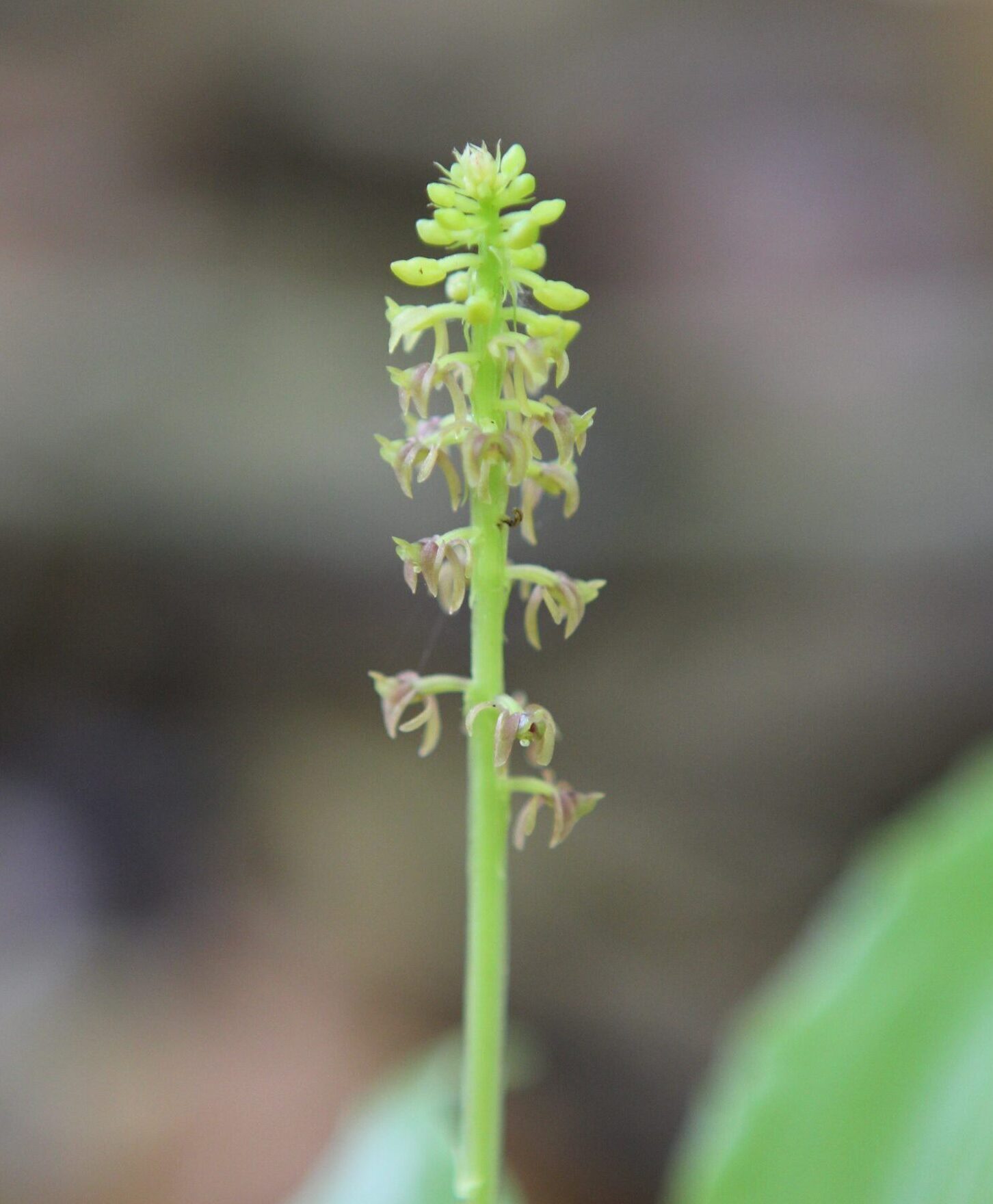
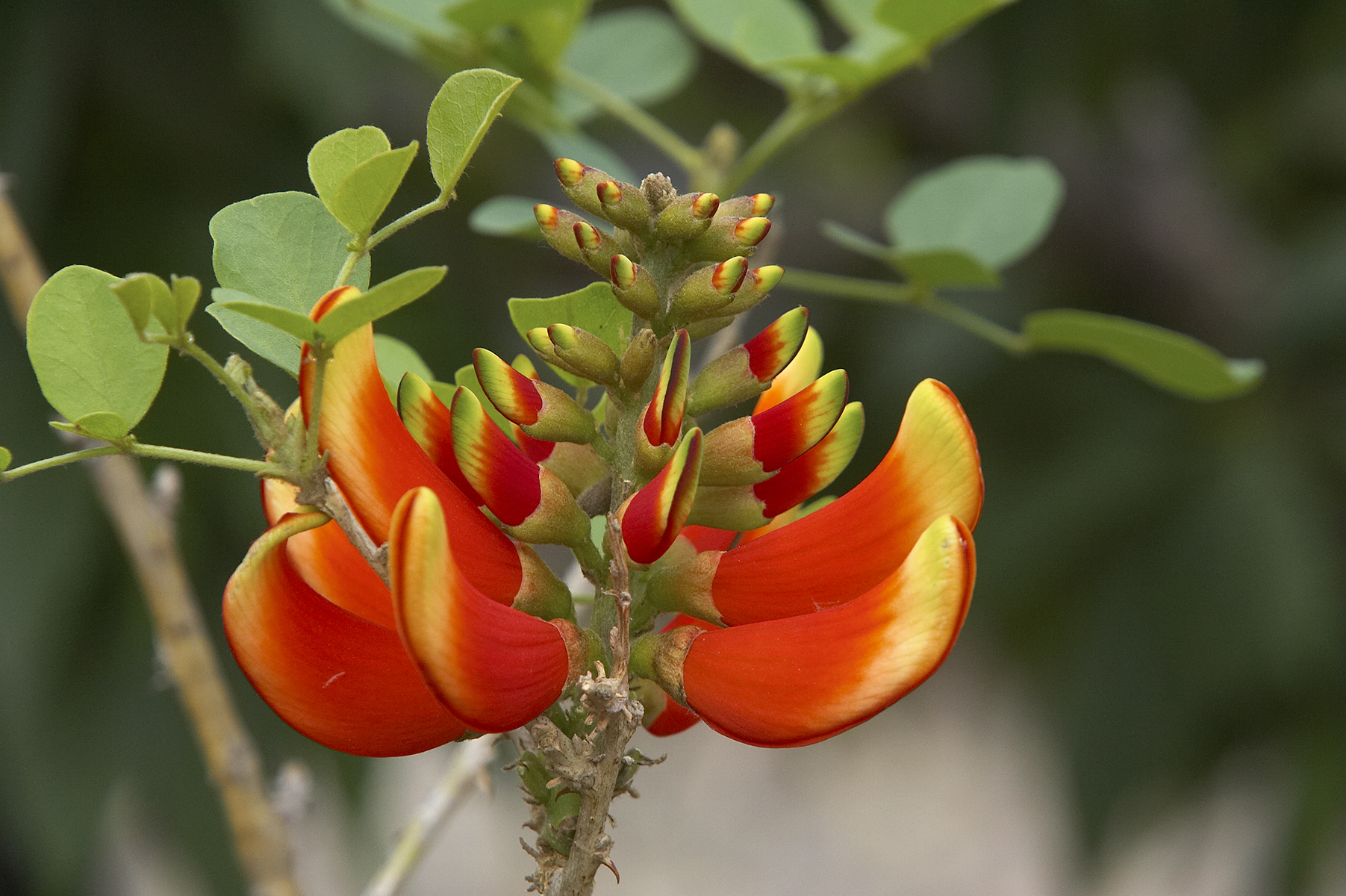
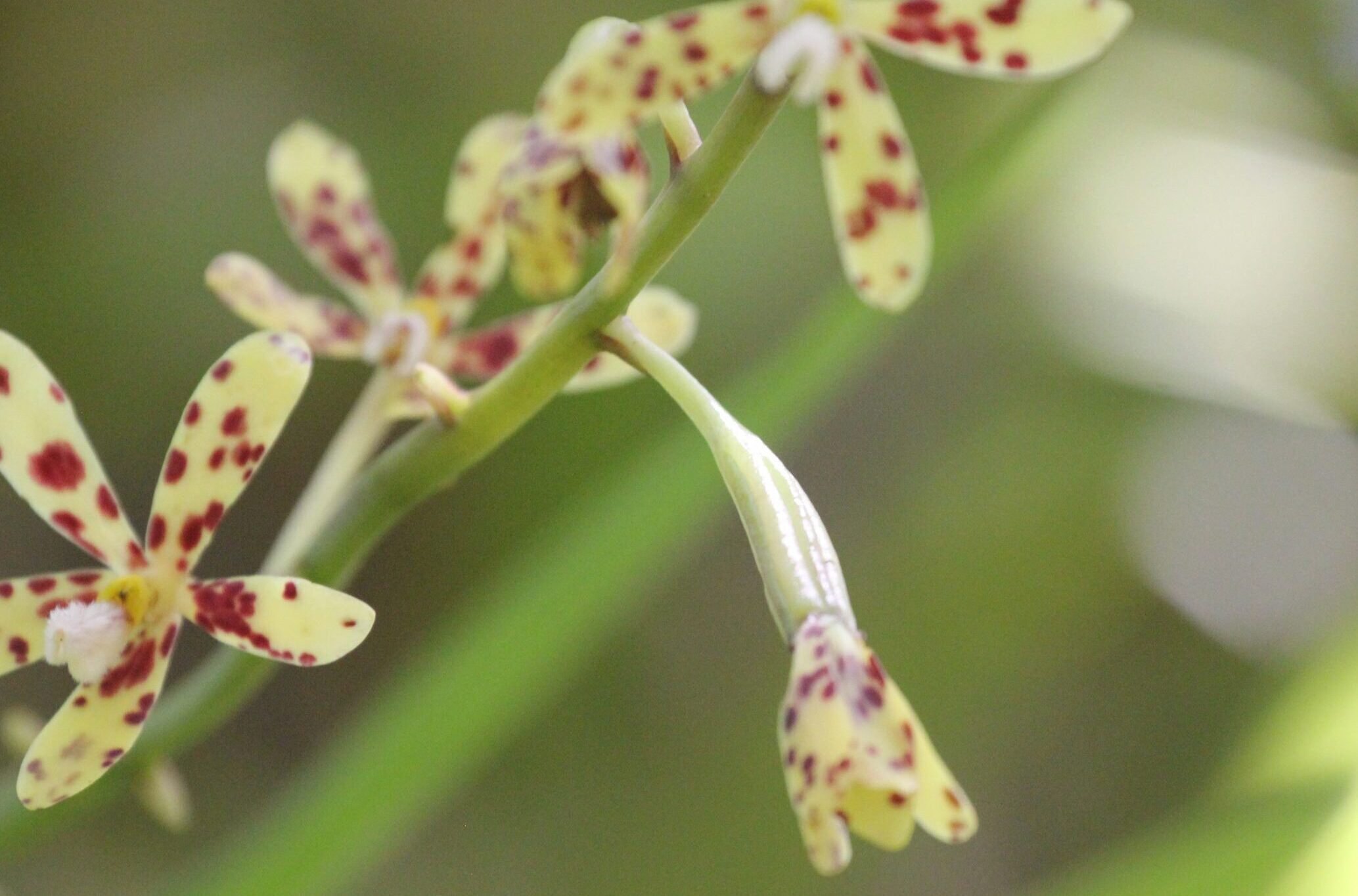
What are the greatest challenges you face in conservation propagation or horticulture?
One of the greatest challenges is the lack of information on the propagation of threatened species. CPC and individual institutions have developed wonderful resources to bridge those gaps, but there is still much work to do! As a plant propagator, I looked up information about the nature of seeds, cuttings, and procedures in related or similar species. I tried those methods and others that had worked in the past, keeping detailed records on what worked and what didn’t. I also talked through methods and procedures with other propagators. I found great resources through American Public Gardens Association, excellent propagators at the International Plant Propagators’ Society, and knowledgeable plant conservationists at the Center for Plant Conservation—yet there is so much information still to learn. We all need to continue to work together to save plant species.
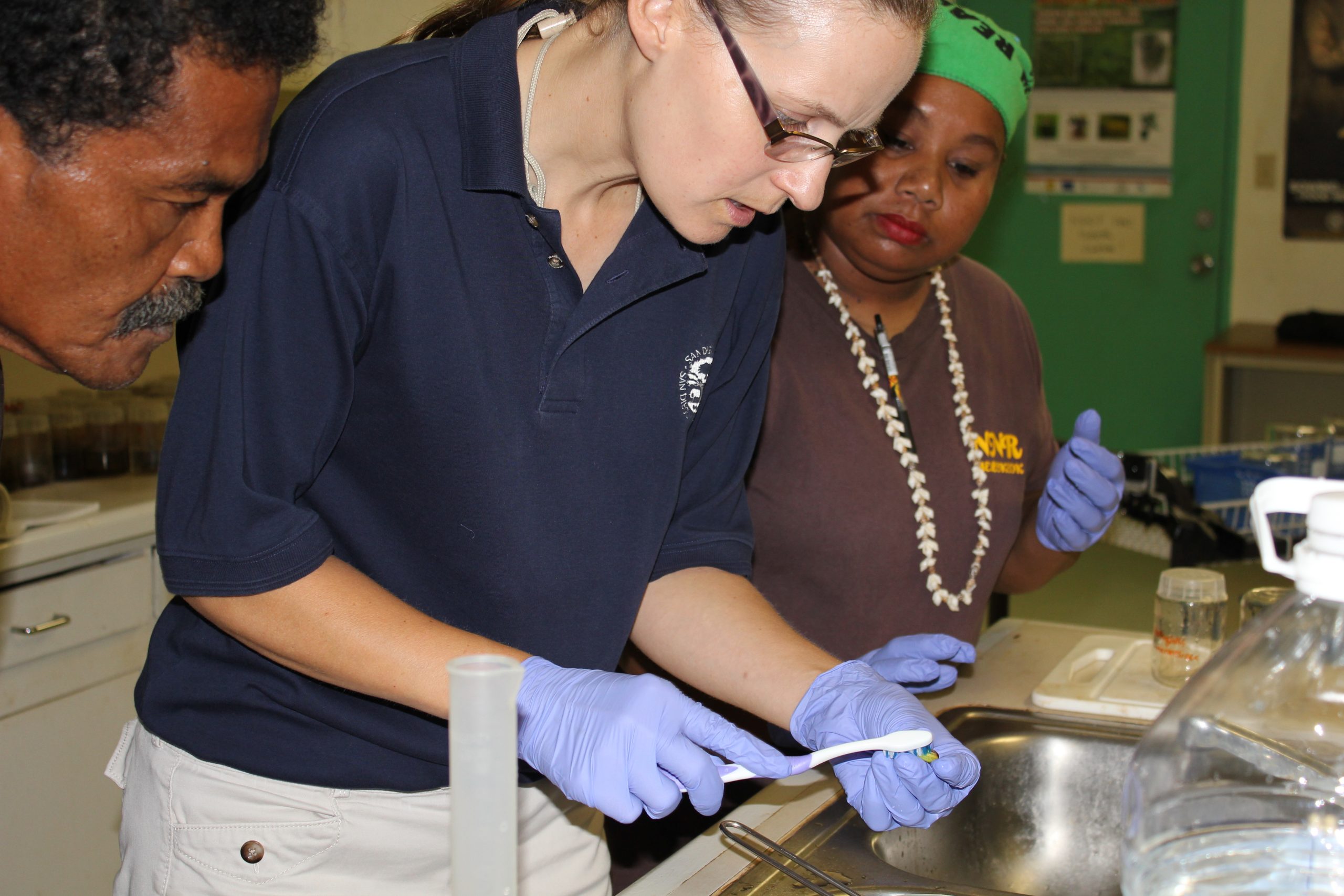

What excites you about the role of horticulture in conservation?
There is so much work to do in saving plant species worldwide. We can all make a difference by working together. Horticulturists are instrumental in unlocking the mysteries of seed development, seed germination, rooting cuttings, and induction of species into micropropagation. We have the expertise to discover, observe, research, protect, and care for these species. Identifying successful techniques is both a science and an art. Beyond successful germination or rooting of cuttings, we need to make sure these young plants can transition to a container or the ground and grow to maturity, starting the life cycle over again.
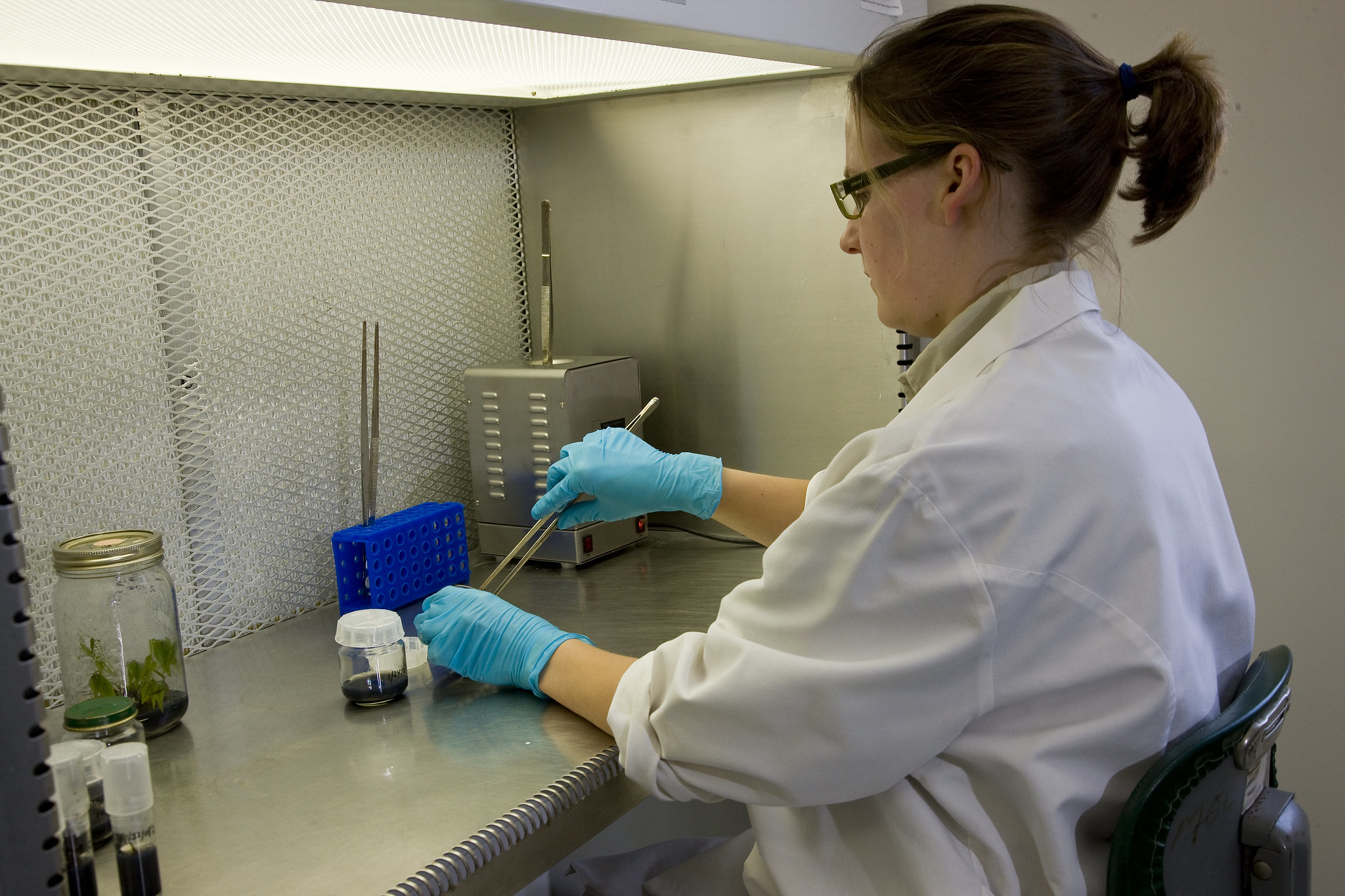
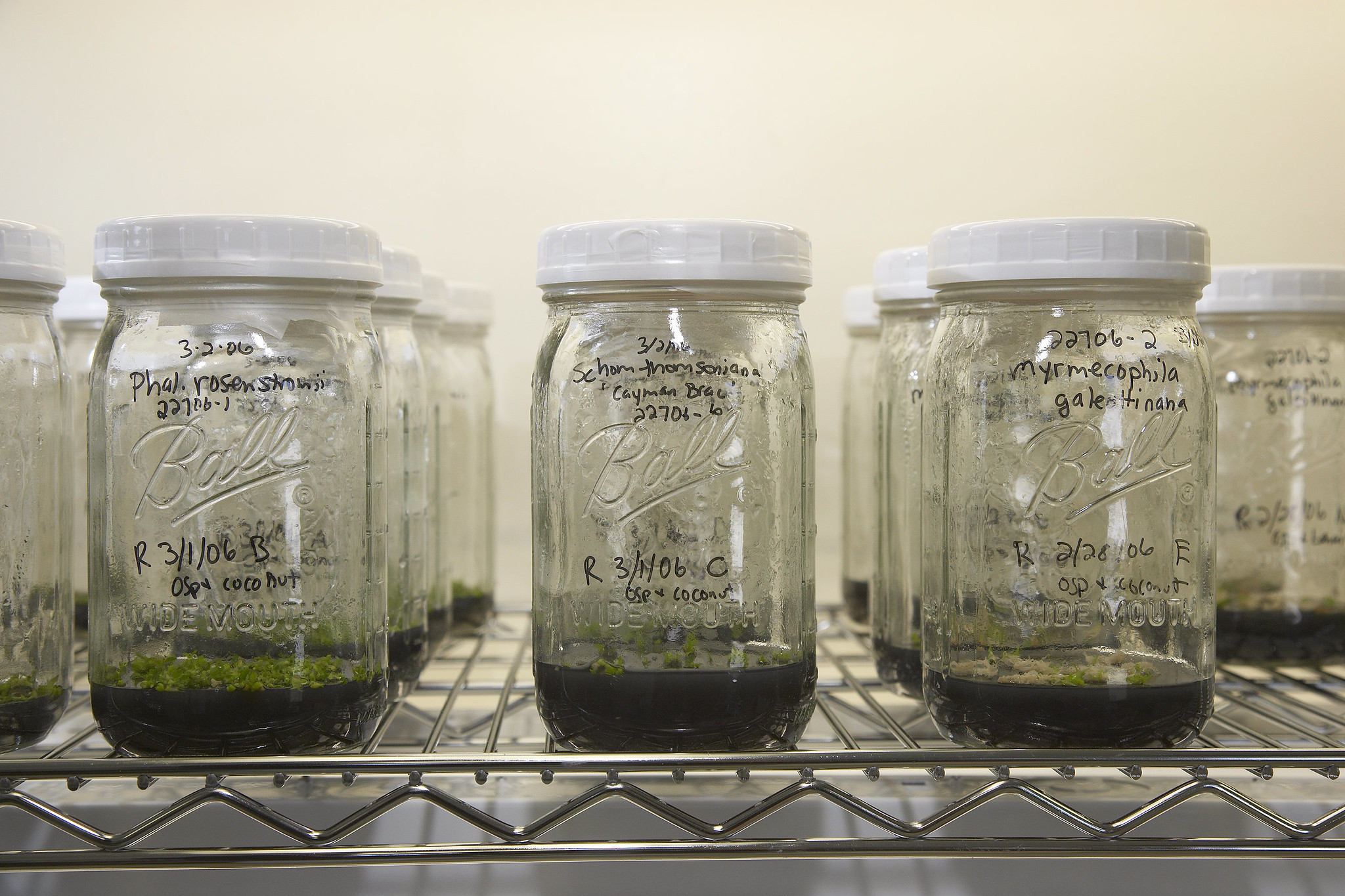
As Seen on CPC’s Rare Plant Academy: Horticulture Best Practices for Rare Plants
The CPC Best Practice Guidelines expanded this month with the addition of Horticulture Best Practices for Rare Plants. The Best Practices are developed through decades of experience and collaboration. We hope you will explore them on the CPC website, newly redesigned as part of the IMLS National Leadership Grant.
The redesign improves the accessibility of the Rare Plant Academy, our online knowledge base for plant conservation. In this space, plant professionals can share expertise and help others to learn from their experience. Expert and novice plant conservationists using Rare Plant Academy will now find it easier to save pertinent information—including videos and articles—to their profiles, share insights and photos, ask questions, and much more. A new omni-search makes it easier to find existing information in CPC’s archive of newsletters, videos, best practices, and plant profiles—all in one place!
As with the other resources on Rare Plant Academy, our Best Practices can only grow and be strengthened by increased engagement with the plant conservation community. So please register or login through your existing RPA account to see what’s new and share your knowledge.
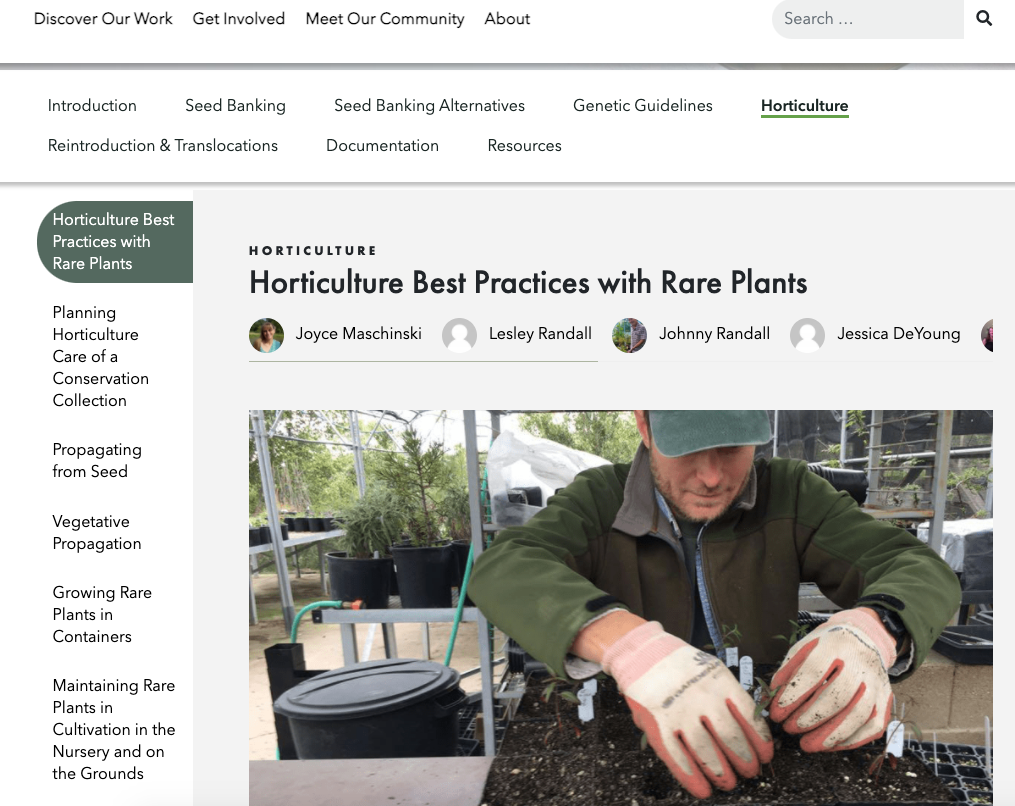
Get Updates
Get the latest news and conservation highlights from the CPC network by signing up for our newsletters.
Sign Up Today!Employment Opportunities
Under general oversight and direction from the Board of Directors, the Executive Director manages the affairs of the Conservancy and its day-to-day operations. The Executive Director, (directly and through subordinates), plans, organizes and directs the work of the organization, including, but not limited to:
- Implementation of RLC’s strategic plan
- Development and oversight of the annual budget
- Pursuit and development of funding opportunities, including major gift prospect development and grants
- Management and supervision (and necessary growth) of a talented staff tasked by:
o Completing land conservation projects for habitat protection, community engagement, mitigation, and other purposes
o Responsible land stewardship, restoration and easement monitoring
o Proposing and organizing community engagement events to connect diverse populations of people with Nature
o Planning and managing organizational finances and budgets - Effective and timely reporting to and communication with the Board of Directors
TO APPLY
Please email resume and cover letter to:
Rivers & Lands Conservancy ATTN: Board Executive Committee DAllen (dot) CCG (at) gmail (dot) com
Please include the words “RLC Executive Director Search” in the subject line.
REVISED POSTING: EXTENED CLOSING DATE FOREST RESERVE PLANNING TECHNICIAN – ID# 220527. Pacific Cooperative Studies Unit. Regular, Full-Time, RCUH Non-Civil Service position with the Pacific Cooperative Studies Unit (PCSU), Department of Land and Natural Resources (DLNR) Division of Forestry & Wildlife (DOFAW) in the Forestry Section administration office, located in Honolulu, Hawai‘i. Continuation of employment is dependent upon program/operational needs, satisfactory work performance, availability of funds, and compliance with applicable Federal/State laws.
MINIMUM MONTHLY SALARY: $2,649/Mon.
DUTIES: Assists with the development of forest reserve management plans. Drives project vehicle to work sites. Provides technical assistance, expertise and research on boundary discrepancies. Researches all historical information and maps, survey documents, and official records (e.g., executive orders) necessary to determine the current status, encumbrances and boundaries of the State managed forest reserves. Assists with developing and implementing a schedule of actions to resolve found discrepancies for state forest reserves. Remedies the current forest reserve boundary and discrepancies using data gathered from the archived records from the State Archives, City and County of Honolulu Department of Planning, Department of Accounting and General Services (DAGS) State Survey, DLNR Bureau of Conveyances, DLNR Land Division, and DOFAW. Coordinates with other agencies such as the City and County of Honolulu Department of Planning and the Board of Water Supply to reconcile records. Uses mapping programs, such as ArcGIS and ArcGIS Online, to illustrate boundary records, planned forest management activities, and significant natural or man-made resources. Prepares and tracks recommendations and submittals to solve discrepancies. Composes, coordinates, and tracks all documents necessary to resolve ongoing boundary discrepancies for the forest reserves. Arranges for and oversees public meetings and hearings related to forest planning initiatives. Ensures that all actions are consummated in the issuance of a Governor’s Executive Order. Provides technical expertise to land management inquiries; reviews planning documents and inspects management actions. Assists with miscellaneous forestry projects objectives as needed.
INQUIRIES: Michelle Miyata 956-9512 (Oahu).
APPLICATION REQUIREMENTS: Please go to www.rcuh.com and click on “Job Postings.” You must submit the following documents online to be considered for the position: 1) Cover Letter, 2) Resume, 3) Supervisory References, 4) Copy of Degree(s)/Transcript(s)/Certificate(s). All online applications must be submitted/received by the closing date (11:59 P.M. Hawai‘i Standard Time/RCUH receipt time) as stated on the job posting. If you do not have access to our system and the closing date is imminent, you may send additional documents to rcuh_employment@rcuh.com. If you have questions on the application process and/or need assistance, please call (808)956-7262 or (808)956-0872. CLOSING DATE: February 4, 2021. RCUH’s mission is to support and enhance research, development and training in Hawai‘i, with a focus on the University of Hawai‘i. Equal Opportunities Employer – Minorities/Women/Disability/Veteran.
Open Position (search resumed): Clemson University Herbarium (CLEMS) Curator and Lecturer – Apply by 3 February 2021 – Clemson, South Carolina, U.S.A.
Please note, this is the resumption of a search which began last year, but was put on hold due to the pandemic.
The Department of Biological Sciences seeks applicants for a 12-month, full-time Herbarium Curator and Lecturer. This is a renewable, non-tenure track position with opportunity for promotion.
The successful applicant will serve as Curator of the Clemson University Herbarium. The regionally focused collection includes approximately 90,000 specimens of vascular plants and lichens that is the second largest herbarium collection in South Carolina, and part of the Bob and Betsy Campbell Museum of Natural History
Position Responsibilities
Responsibilities as a Curator will include inventory and loan management, specimen preparation, repair, and maintenance, and maintenance of the Herbarium digital collection information system and library. Responsibilities as a Lecturer will include teaching 1-2 lecture courses with associated labs per year on topics including plant taxonomy/systematics and field-based botany, as well as supporting inquiry-based learning related to the Herbarium.
The Herbarium Curator/Lecturer will also collaborate with the Curator of the Vertebrate Collection to promote the discovery, learning, and engagement missions of the Museum of Natural History through outreach associated with plant identification, public presentations, tours, and special events. The Curator/Lecturer will supervise students and volunteers, and work closely with faculty, students, and staff to facilitate use of the collection as a resource for research and education.
The Herbarium moved into newly renovated space in Summer 2020, providing an expanded location for the collection and its use by researchers and students. The Curator/Lecturer will help develop new exhibits that promote the use of the collection for discovery, learning, and engagement. For more information on the new herbarium renovation.
Qualifications
Successful candidates must have an M.S. in Botany, Biology, or a related discipline at the time of appointment, with a Ph.D. preferred. Ideal candidates will demonstrate significant herbarium curatorial experience, strong computing skills (including experience working with database management systems and GIS), expertise in vascular plant identification, successful experience teaching university-level biology lecture and laboratory courses, and a commitment to promoting and enhancing diversity and inclusion. Knowledge of the flora of the Southeastern US is preferred, as is experience with specimen digitization, collections information systems and standards (e.g., Symbiota, Darwin Core, GBIF), georeferencing, and digital collection access management.
Application Instructions
Apply today .
Please submit a (1) cover letter, (2) curriculum vitae, (3) statement of curatorial/collection management experience, (4) statement of teaching philosophy, experience, and interests including strategies currently used or planned to foster diversity and inclusion, as well as strategies for integrating use of the herbarium in teaching, and (5) names and contact information for three professional references.
For full consideration, applications should be submitted by February 3, 2021. Review will continue until the position is filled.
Please contact Search Chair Rick Blob with questions (rblob@clemson.edu).
Equal Employment Opportunity Statement
Clemson University is an AA/EEO employer and does not discriminate against any person or group on the basis of age, color, disability, gender, pregnancy, national origin, race, religion, sexual orientation, veteran status or genetic information. Clemson University is building a culturally diverse faculty and staff committed to working in a multicultural environment and encourages applications from minorities and women.
Conservation Corps New Mexico positions available for two crew members and one crew leader working with or supervising New Mexico Bureau of Land Management’s (BLM) Seeds of Success (SOS) teams, operated by Conservation Corps New Mexico.Click on links below for more information:
FNAI Botanist Position:
The Florida Natural Areas Inventory (FNAI) at Florida State University is looking for an experienced botanist who will work, under the direction of FNAI’s Senior Botanist, on projects related to assessing the conservation status of rare and listed plants. This will be a long-term position in which the selected candidate, driven by a personal interest in botany, will develop broad expertise in the rare floral of Florida. Although some limited fieldwork will be required, this position will be largely office based. It would be ideal for this position to work out of FNAI’s office in Tallahassee, but we will consider remote work from a location within Florida for strong candidates.
POSITION TITLE: Botanist (full time position with university benefits)
SUPERVISOR: Amy Jenkins / Frank Price
LOCATION: Tallahassee, FL (Remote work will be required until FSU fully resumes campus operations. The option to continue working remotely, within FL, will be considered for well-qualified candidates)
CLOSING DATE: February 4, 2021
SALARY: ~$50,000 (depending on qualifications)
ABOUT FNAI:
The Florida Natural Areas Inventory (FNAI) is Florida’s Natural Heritage Program and state member of the NatureServe network. We are housed within the Florida Resources and Environmental Analysis Center at Florida State University. As the Florida Heritage Program, one of our primary responsibilities is maintaining a spatial database of information on Florida’s rarest species and conservation lands but we also work on an array of applied research projects to inform conservation and land management decisions making with funding provided by state and federal agency partners. Our office is off-campus in Midtown, which is centrally located near shops, restaurants, and historic neighborhoods. The larger Tallahassee region offers many outdoor recreation opportunities in the nearby Apalachicola National Forest and a number of coastal parks and refuges within a short drive from town.
DUTIES:
1. Develop an in depth understanding of Florida’s rare plant species, including their taxonomy, biology, and conservation status, and use this knowledge to help prioritize information needs for Florida plant conservation
2. Apply NatureServe Natural Heritage methodology to assess the conservation status of rare plant species
3. Conduct Species Status Assessments of At-Risk Florida plant species following USFWS guidelines
4. Conduct reviews of federally listed Florida plant species following USFWS guidelines
5. Compile rare plant observation data for loading into the Florida Biotics database and assist with data entry, QC, and reporting
6. Analyze plant occurrence and distribution data to inform status assessments and reviews
7. Facilitate professional meetings of botanical experts
8. Deliver presentations of findings to state and federal agencies responsible for conservation decision making
9. Complete technical reports and manuscripts
10. Assist with scheduling and assignment of work related to species conservation status assessments and reviews
11. Maintain relationships with Florida botanical experts, and staff of FNAI’s cooperating agencies, in order to understand the information priorities of the botanical conservation community
12. Identify plants, collect field data on vegetative structure and composition, and distinguish vegetative communities using standard field protocols
REQUIREMENTS:
1. Bachelor’s degree in the botany or biological sciences (master’s degree or PhD preferred)
2. Minimum of one year (two years or more preferred) full-time experience conducting botanical research
3. Extensive knowledge of the flora of the southeastern US, preferably Florida
4. Excellent technical writing skills (writing sample will be required)
5. Experience or familiarity with ArcGIS (or other GIS software), Excel, and database software
6. Structured thinker who is highly productive yet meticulously attentive to detail
7. Ability to work independently and under pressure of multiple deadlines
8. Comfortable leading meetings and presenting work to a range of audiences
9. Ability to work well with FNAI staff scientists and other university or agency partners.
10. Willingness to travel occasionally, during the week, for multi-day work trips in remote areas.
11. Physical condition sufficient to conduct rigorous fieldwork in adverse conditions.
OTHER PREFERRED SKILLS:
1. Experience using R or Python for data analysis
2. Experience/familiarity with quantitative field survey methods used to assess rare plant populations
3. Experience/familiarity with analysis of the viability of plant populations
4. Experience/familiarity with species distribution modeling
5. Experience/interest in primitive camping during occasional field work (camping on site during the cooler months allows FNAI staff to make good use of daylight in areas where hotels are far away)
TO APPLY:
To be considered for this position, you must complete the application on the FSU website by the closing date of February 4, 2021.
For questions, or more information, contact Frank Price, FNAI Assistant Director, at fprice@fnai.fsu.edu.
Are you inspired to be a part of an organization committed to protecting wildlife around the globe? San Diego Zoo Global is a mission-based, non-profit wildlife conservation organization with two world famous front doors where we unite our passion for wildlife, expertise in wildlife care, and conservation science to save species from the brink of extinction. Our commitment is to provide visits to the San Diego Zoo and San Diego Zoo Safari Park as opportunities to learn about and engage with best-in-class conservation work, and how that work is changing outcomes for wildlife everyday.
HOW YOU WILL IMPACT OUR MISSION
The Communications Coordinator supports San Diego Zoo Global’s mission to save species worldwide. The Communications Coordinator for the Center for Plant Conservation (CPC) provides administrative support while also handling a wide variety of communications projects. This position reports to the Director of Plant Conservation/CPC President & CEO.
WHAT YOU WILL DO
- Responsible for written and electronic communication, media relations and print materials for the Center for Plant Conservation (CPC)
- Identify and contract illustrators, animators, videographers, editors and educational evaluators needed for CPC Rare Plant Academy and the CPC Applied Plant Conservation Course
- Enhance CPC’s social media participation on Facebook and Twitter and other social media outlets, including ensuring all content is regularly updated
- Implement e-communications, social media, eblasts for donors and general public on a weekly basis and actively monitor CPC’s online reputation
- Assist in creation, production, and dissemination of printed publications for education, development, and administration purposes (such as annual report, mid-year and annual appeals, brochures, and event postcards)
- Create and coordinate production schedules and maintain ongoing relationships with graphic designers, mail houses, printers, and photographers, including conservation officers in the CPC network
- Support the development and execution of identity and collateral materials for major organizational initiatives
- Conduct media relations program for events and activities, including drafting and distributing press releases and maintaining media and photo archives
*Deadline: **This position is subject to change/close at any time**
*Start Date: June 2021
*End Date: June 2022
*Position: Natural Resource Specialist Assistant
*Overview: American Conservation Experience, a nonprofit Conservation Corps, in partnership with the Bureau of Land Management New Mexico State Office, is seeking a Natural Resource Specialist Assistant for 52 weeks to assist BLM field offices in help support APD permitting and natural resource conservation by surveying for special status species and other natural resources throughout BLM-administered lands. This opportunity is intended for enthusiastic professionals with a background in Natural Resources or a closely related field, with a deep interest in jointly advancing their career goals and the stewardship of Utah’s natural resources through purposeful fieldwork and research.
*Essential Responsibilities and Functions:
Assist Natural Resource Specialists with NEPA
Perform project clearance surveys for natural resources, according to established standards and
Coordinate with project leads, resource specialists and project proponents to incorporate survey findings and appropriate mitigation measures into project designs and NEPA
Conduct literature reviews to address knowledge
Enter survey data into survey record
*Location: BLM Carlsbad Field Office, NM
*Who may apply:
Members must be US citizen or Permanent Resident, as required to comply with U.S. government contracts
Members must be 18-30 (Applicants between 31 and 35 may be considered based on veteran status)
Ability and willingness to undergo a federal criminal background check is required
Must have a valid driver’s license, clean driving record with ability to provide required documentation; (Driving record checks will be completed during on-boarding process. (Members must be 21+ to drive ACE/Agency vehicles)
Ability to drive an [Agency or ACE] vehicle is required for this position. ACE will conduct a driving record check upon on-boarding and member must be cleared by ACE to drive.
*Compensation: $600 per week living allowance (Stipend) to cover Housing, Food, and incidentals. An additional $100 per week housing reimbursement may be provided.
*Full announcement and application: https://usaconservation.applicantpool.com/jobs/522717.html
SHR is currently seeking an individual to serve as an additional full-time gardener. This position will support the Director of Horticulture in the maintenance and development of the gardens, applying best practices in horticultural techniques to a wide variety of plant materials to ensure they are maintained to the highest horticulture standards. This individual will monitor, manage and maintain garden areas including new installations, weeding, watering, pruning and grooming, composting, mulching, identifying problems and treating them.
Research Assistant (RA) in Tree Conservation Biology, Emphasis in Bioinformatics and Genomics
Are you interested in using genomic data, bioinformatics, simulations, and ecology for conservation? The Hoban Lab at The Morton Arboretum is hiring a two-year Research Assistant in Tree Conservation Biology. We seek to understand dynamics and adaptation of species, communities, and genes over time (especially during environmental change), and to develop evidence-based conservation actions. A Bachelor’s degree is required; a Master’s degree, or Bachelor’s plus work experience, is preferred. Applicants should have experience with bioinformatic processing of next generation sequencing data (e.g. RADseq/GBS), computer programming or R, and/or computational simulations (e.g. SimCoal, Slim, etc.). Preferred experience includes genetic data analysis and interpretation. Experience teaching these skills to others is a plus. Note that this description is more detailed than what is shown on the application website.
Research Assistants (RAs) at The Morton Arboretum are involved in all aspects of research: designing studies, planning and executing work, utilizing a variety of scientific approaches, testing protocols, performing analysis, reading literature, interpreting results, and editing manuscripts. The Morton Arboretum strongly emphasizes professional development. There will be opportunities to collaborate on scientific publications, present research at scientific meetings, and spend time building new skills. Three of four past Hoban Lab RAs are now in graduate school at top-tier universities, and the other is a laboratory manager and team leader for an international conservation NGO. This position is full time, term-limited (approx. 24 months), and grant-funded. The applicant should be enthusiastic, curious, well-organized, passionate for plant conservation and genomics, persistent, and self-motivated. They should be able to work without constant supervision, quickly learn new skills, solve problems, communicate clearly in person and electronically, and cooperate with others in a team environment. Very strong attention to detail and meticulous record keeping (e.g. lab notebooks, coding) is essential.
Please explain your fit for the position and describe your experience in one or more of the following in your application cover letter. Also, we have several open positions at The Morton; state that you are applying for the RA in Tree Conservation Biology.
- Planning informatic and/or laboratory activities and keeping detailed lab or digital code notebook; organizing samples or data from multiple projects
- Experience in a managing NGS and/or microsatellite data, from raw files to analysis
- Use of statistical software (SAS, JMP, STATA, R, etc.)
- Use of simulation software, and which kind
- Computer programming including writing and troubleshooting code; translating biological models into code; genomic data analysis
- Interpreting genetic data in a conservation context
- Writing; literature search; meta-analysis or systematic reviews; writing reports
Review of applications will begin immediately. The position will start as soon as possible but at latest August 1st. We are open to remote work for at least part of the first year due to the covid pandemic. If you have questions please contact Sean Hoban (shoban@mortonarb.org).
The Morton Arboretum is a world renowned botanic garden and plant science research institute with a research department of 30+ scientists, a highly collegial and supportive atmosphere, a strong emphasis on work life balance, a research building embedded in 1800 acres of forest and gardens, close proximity to Chicago, and a mission driven focus.
Northern California Botanists 2022 Symposium
In case you were wondering what happened to the NCB 2021 Symposium that normally happens in this second or third week of January — every third year we give ourselves a break by not having a Symposium, and that is this year, 2021. The next NCB Symposium will thus be in January of 2022 — hopefully in person, but possibly a combination of in-person and virtual even if in person is possible post-COVID-19, and virtual only if necessary.
Planning for the NCB 2022 Symposium is already underway. Check the NCB website for updates as the planning progresses, and occasional emails like this one. If you have ideas or suggestions, or would like to be involved in the process, please contact us at ncbotanists@gmail.com.
For more information about Northern California Botanists please visit: www.norcalbotanists.org/
“Northern California Botanists is an organization with the purpose of increasing knowledge and communication among agency, consulting, academic, and other botanists about botanical issues concerning science, conservation, education, and professional development. Our primary objectives are to establish a communication forum via occasional meetings, a scholarship fund for students working on botanical problems in northern California, a job forum, and symposia that focus on the botany of northern California.”
Learn More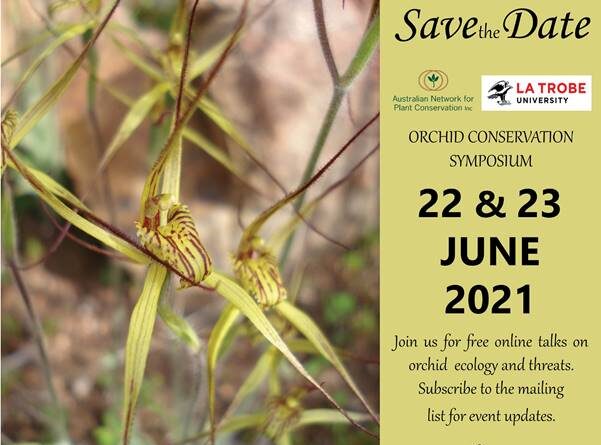
Free Online Orchid Conservation Seminar | Australian Network for Plant Conservation Inc.
The Australian Network for Plant Conservation Inc., in collaboration with La Trobe University, is holding a free online orchid conservation symposium in June. To receive future updates please subscribe to the symposium mailing list.
For more information on the project please head to our website.
Learn MoreThe 1st International Electronic Conference on Biological Diversity, Ecology, and Evolution—Submissions Deadline Extension
The schedule of the 1st International Electronic Conference on Biological Diversity, Ecology, and Evolution (BDEE 2021) has been updated:
Conference Schedule:
- Abstract Submission Deadline: 15 February 202; online in the section “Conference Calls” (https://bdee2021.sciforum.net/)
- Notification of Acceptance: 20 February 2021
- Full Conference Paper Submission Deadline: 1 March 2021
- Conference Open: 15 to 31 March 2021
This conference aims to provide leading scientists focusing on the science of biodiversity with a robust common platform through which to share and discuss the latest research and to promote the advancement of this exciting and rapidly changing field.
We hope that you will be able to join this exciting event, which is organized and sponsored by MDPI, a scholarly open access publisher.
Paper Submission Guidelines:
For information about the procedure for submission, peer review, revision, and acceptance of conference proceedings papers, please refer to the “Instructions for Authors” at https://bdee2021.sciforum.net/.
We look forward to receiving your research papers and welcoming you to this 1st International Electronic Conference on Biological Diversity, Ecology, and Evolution (BDEE 2021).
Learn MoreProposition 1 Restoration Grant Program
Now accepting applications under the 2021 Proposal Solicitation Notice (PDF).
Deadline for applications is February 19, 2021, by 4:00 p.m. PDT through WebGrants.
CDFW will host an Application Workshop (PDF), January 26, 2021.
Below are additional applicant resources:
- CDFW WebGrants Applicant Guidance (PDF) – How to apply through WebGrants
- Microsoft Word version of grant application, compressed (ZIP).
Traditional Section 6 RFP – Pollination Biology, Texas Parks and Wildlife Department
We are pleased to announce the FY21 funding opportunity for Traditional Section 6 Request for Proposals. These grants are administered through Texas Parks and Wildlife Department (TPWD); applications must be submitted to TPWD in order to enter the competition. For details regarding applying to TPWD for this grant please visit our website. We request that proposal materials be submitted to us no later than COB February 26, 2021 in order to give us sufficient time to process and resolve any outstanding concerns prior to formal submission to USFWS.
The plant/pollinator topic is: Investigate the reproductive biology of one of the federally listed plants of the Tamaulipan shrublands of south Texas. Projects on Tamaulipan kidneypetal (Ayenia limitaris) or Zapata bladderpod (Physaria thamnophila) should include but are not limited to: determining the breeding system, documenting effective pollinators, estimating effective pollinator forage range and determining the viable seed production in wild populations. A project on ashy dogweed (Thymophylla tephroleuca) should include but is not limited to: documenting effective pollinators, estimating effective pollinator forage range, and documenting seed dispersal and seed dormancy mechanisms. From the results of the above listed research and any other existing data on the species, an evidence-based rationale should be given for how that species’ populations can be delineated. Maximum federal budget of $100,000.
Consult with staff at TPWD prior to submission of your proposal package to ensure your project targets priority needs. The contact for questions about the above plant/pollinator project is anna.strong@tpwd.texas.gov. Please review the RFP Specifications listed here before contacting. Other more general questions about Texas Traditional Section 6 projects or animal-related high priority projects should be directed to Chelsea Acres (chelsea.acres@tpwd.texas.gov) or visit this website (scroll to bottom) to find biologist contact info.
Learn MoreWebinar | Biogeography of Caribbean Cacti
Webinar on the Biogeography of Caribbean Cacti by Dr. Lucas Majure from the UFL Herbarium. The Botanical Society of Washington organizes it as part of their monthly meeting on Feb 2nd at 7 pm EST.
Below is the information on the webinar and this is the link to connect via Zoom:
https://us02web.zoom.us/j/89117092317
Meeting ID: 891 1709 2317
+1 301 715 8592 US (Washington D.C)
+1 929 205 6099 US (New York)
+1 312 626 6799 US (Chicago)
+1 253 215 8782 US (Tacoma)
+1 346 248 7799 US (Houston)
+1 669 900 6833 US (San Jose)
2021 Forest Genetics Student and Post Doc Symposium
Co-hosted by the Western Forest Genetics Association (WFGA) and the Canadian Forest Genetics Association/ l’Association canadienne de génétique forestière (CFGA/ACGF). A virtual conference to learn from and connect with students from across North America and around the world.
May 19-May 20, 2021
Feb 28 deadline for student submissions.
https://pheedloop.com/forestgenetics2021/site/
Learn MoreWays to Help CPC

Support CPC by Using AmazonSmile
As many of us are now working from home and relying on home delivery more and more, we want to remind you that you can keep your home stocked AND SavePlants. If you plan to shop online, please consider using AmazonSmile.
AmazonSmile offers all of the same items, prices, and benefits of its sister website, Amazon.com, but with one distinct difference. When you shop on AmazonSmile, the AmazonSmile Foundation contributes 0.05 percent of eligible purchases to the charity of your choice. (Center for Plant Conservation).
There is no cost to charities or customers, and 100 percent of the donation generated from eligible purchases goes to the charity of your choice.
AmazonSmile is very simple to use—all you need is an Amazon account. On your first visit to the AmazonSmile site, you will be asked to log in to your Amazon account with existing username and password (you do not need a separate account for AmazonSmile). You will then be prompted to choose a charity to support. During future visits to the site, AmazonSmile will remember your charity and apply eligible purchases towards your total contribution—it is that easy!
If you do not have an Amazon account, you can create one on AmazonSmile.
Once you have selected Center for Plant Conservation as your charity, you are ready to start shopping. However, you must be logged into smile.amazon.com—donations will not be applied to purchases made on the Amazon.com main site or mobile app. It is also important to remember that not everything qualifies for AmazonSmile contributions.
So, stay safe inside, and when ordering online, remember you can still help save plants. Please feel free to share this email with your friends and family and ask them to select Center for Plant Conservation.
Thank you all for ALL you do.
The Center for Plant Conservation Newsletter
Contributing Editor/Writer – Christa Horn.
Editors – Cindy Clark and Kathy Elliot.
Managing Editor – Maureen Wilmot.
Design – Ruby Iacuaniello.
Development – FYC Labs.
Donate to CPC
Thank you for helping us save plant species facing extinction by making your gift to CPC through our secure donation portal!
Donate Today